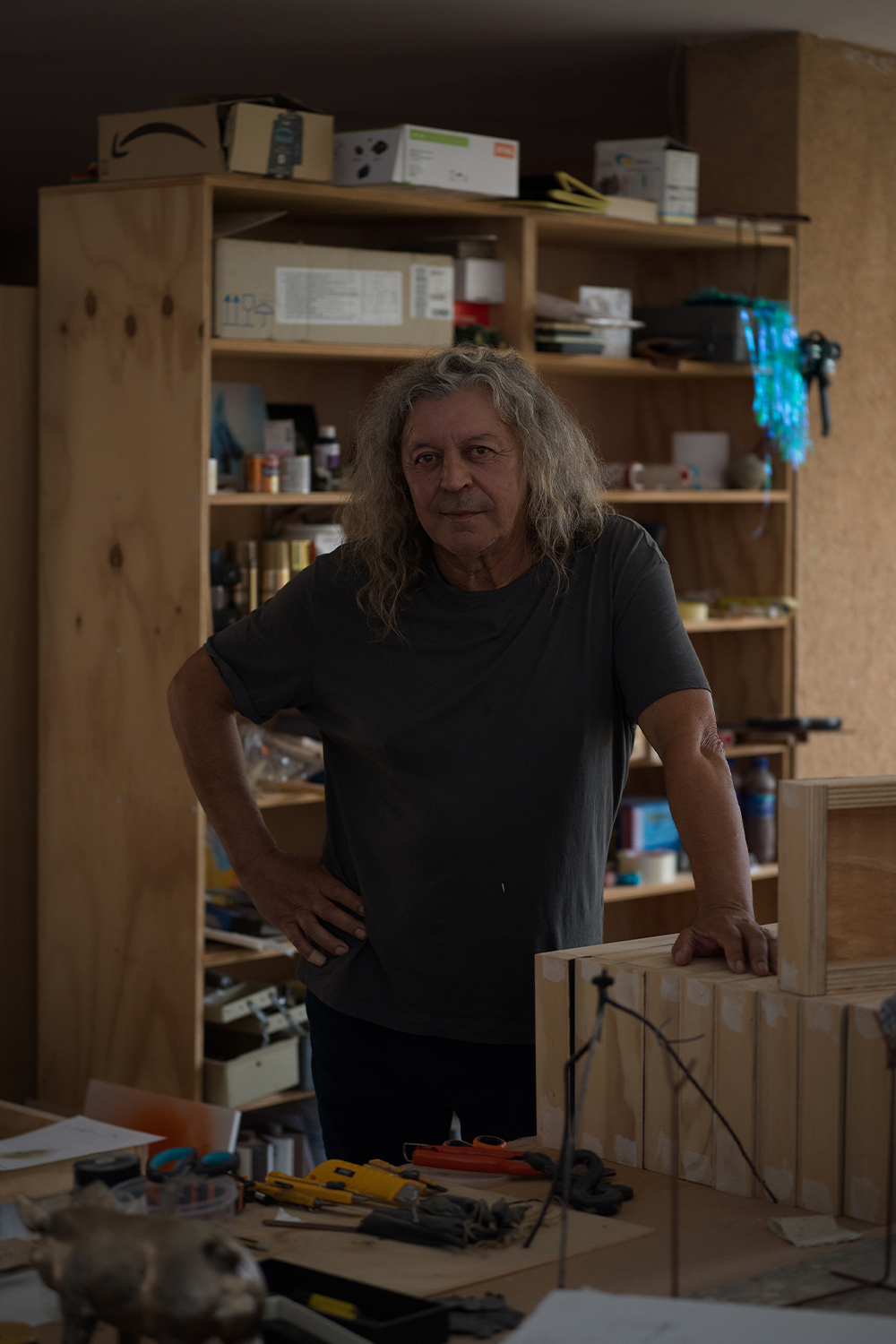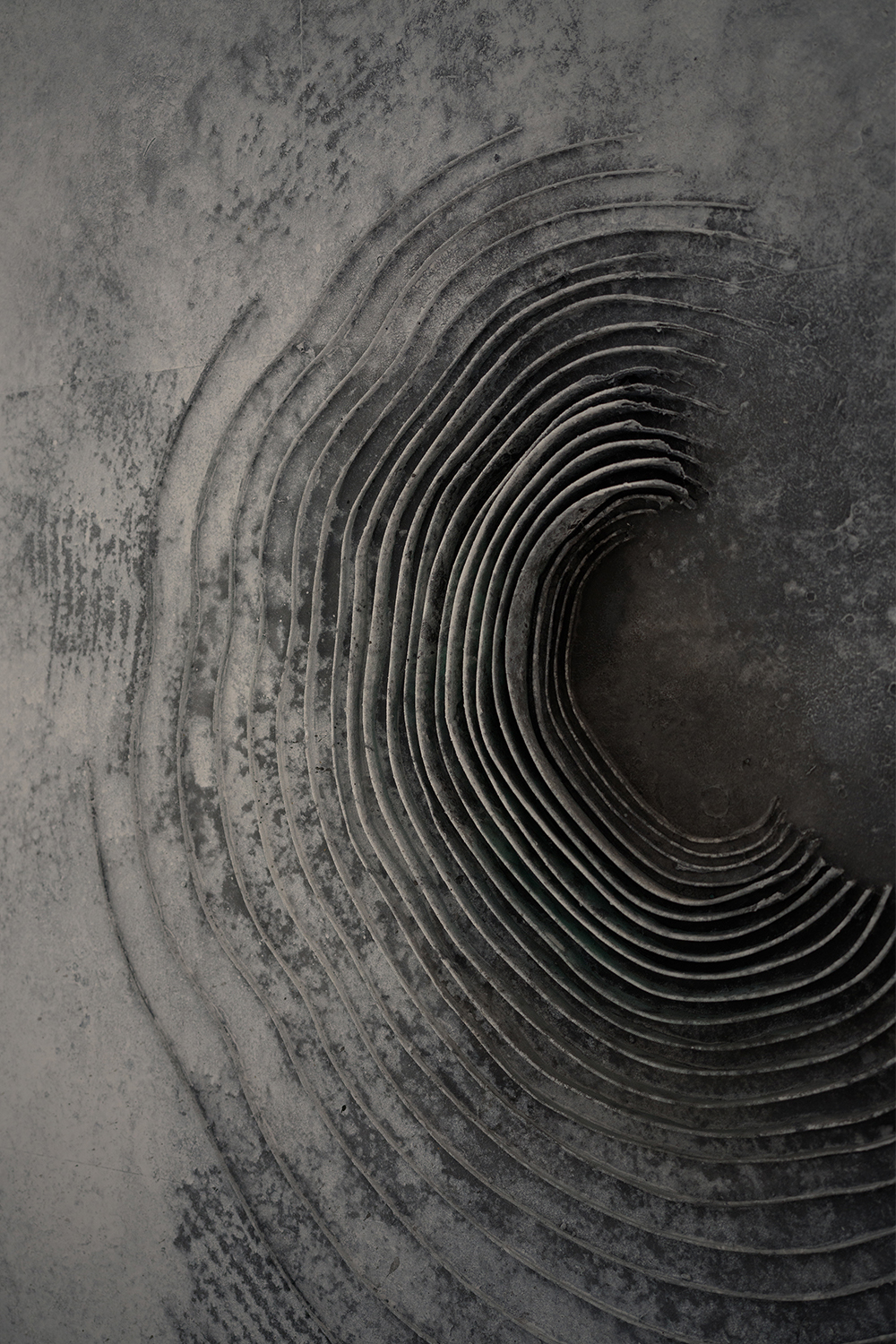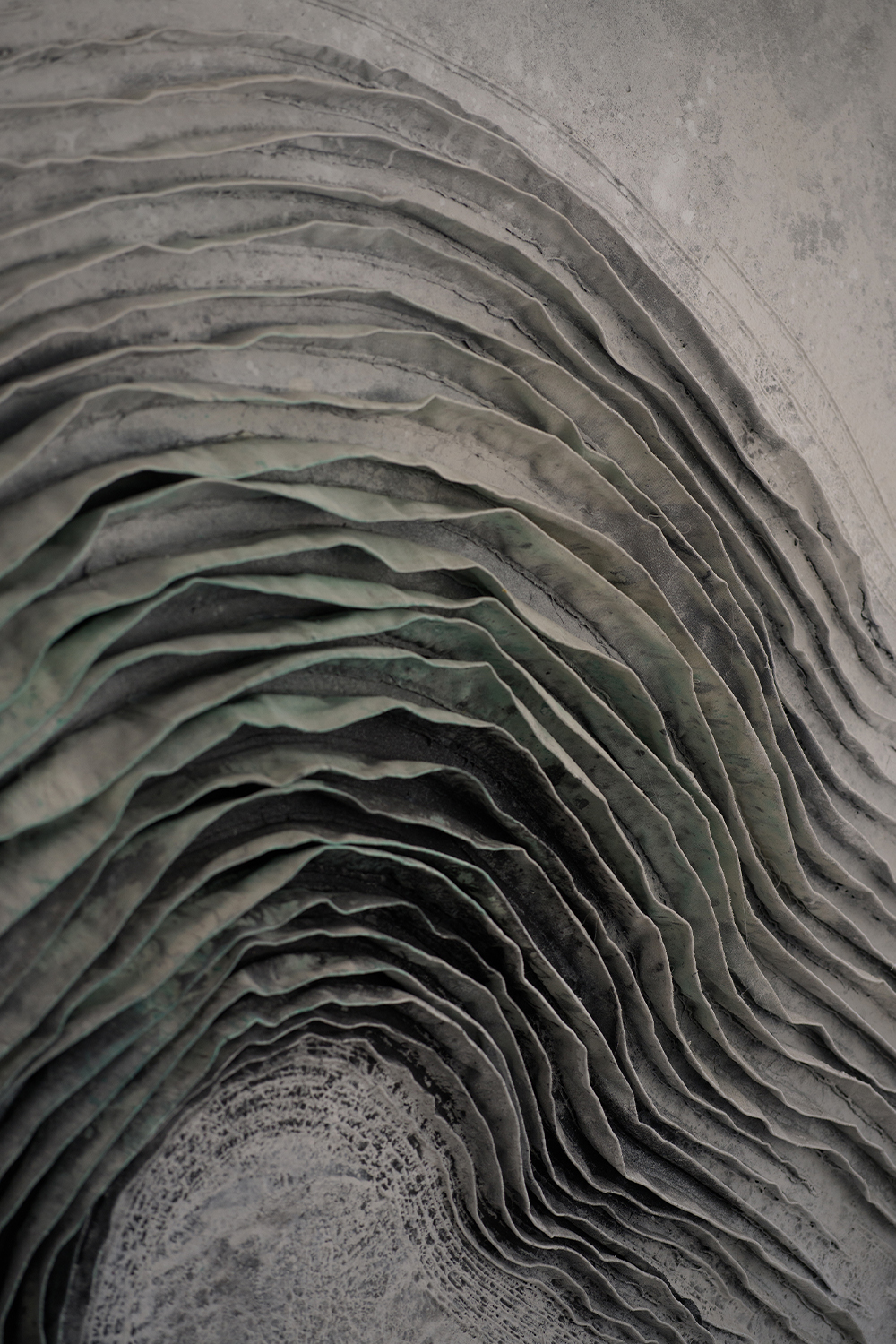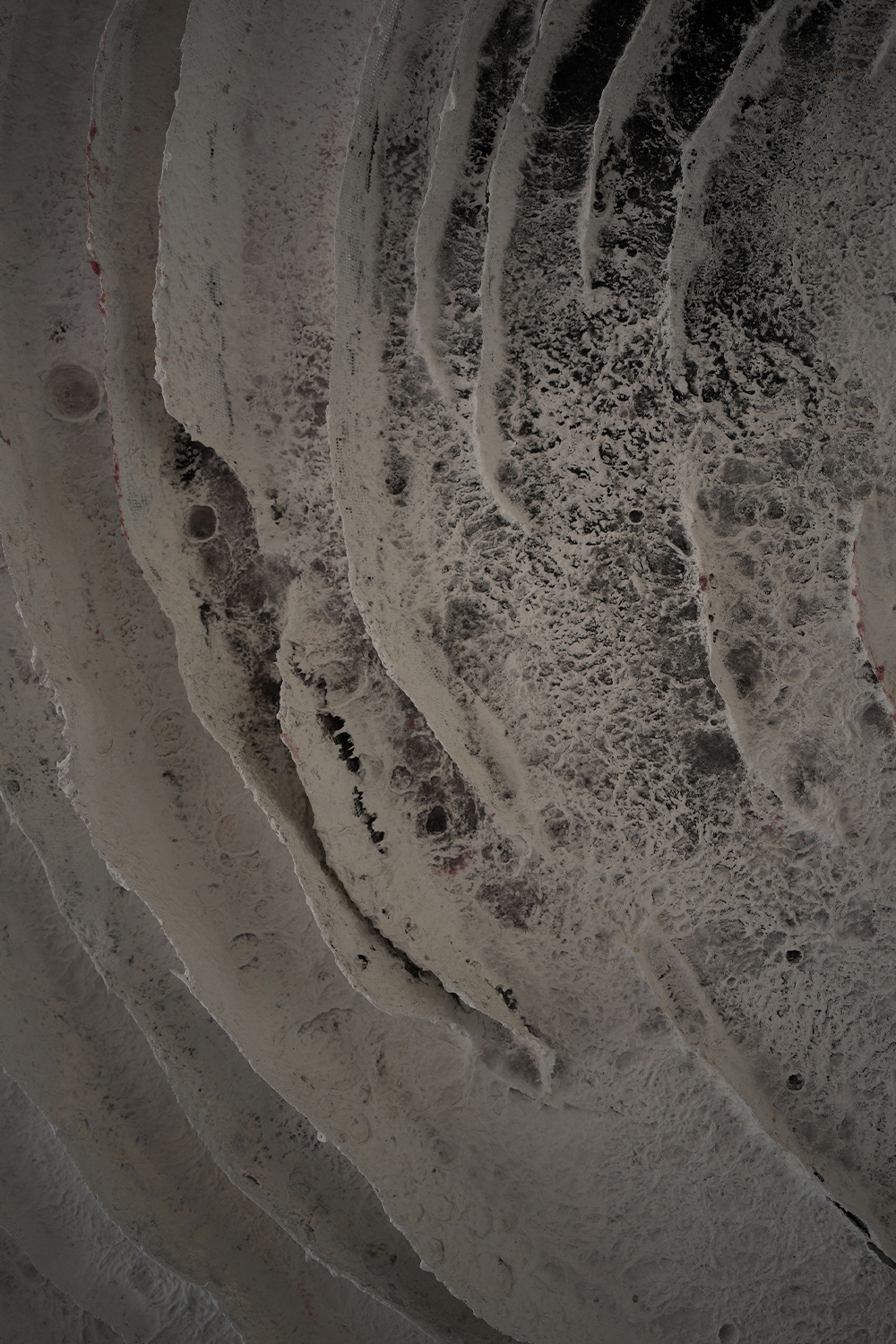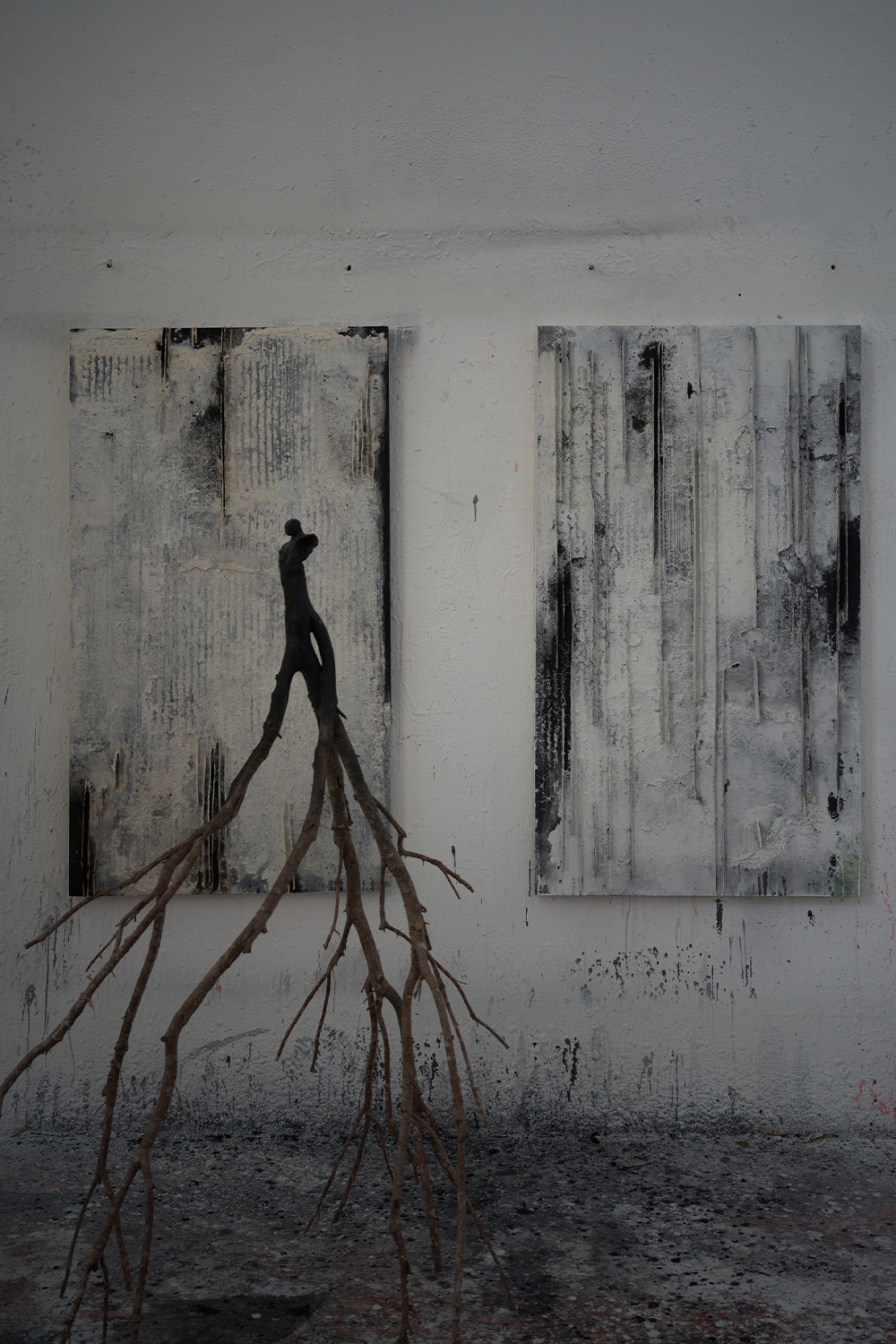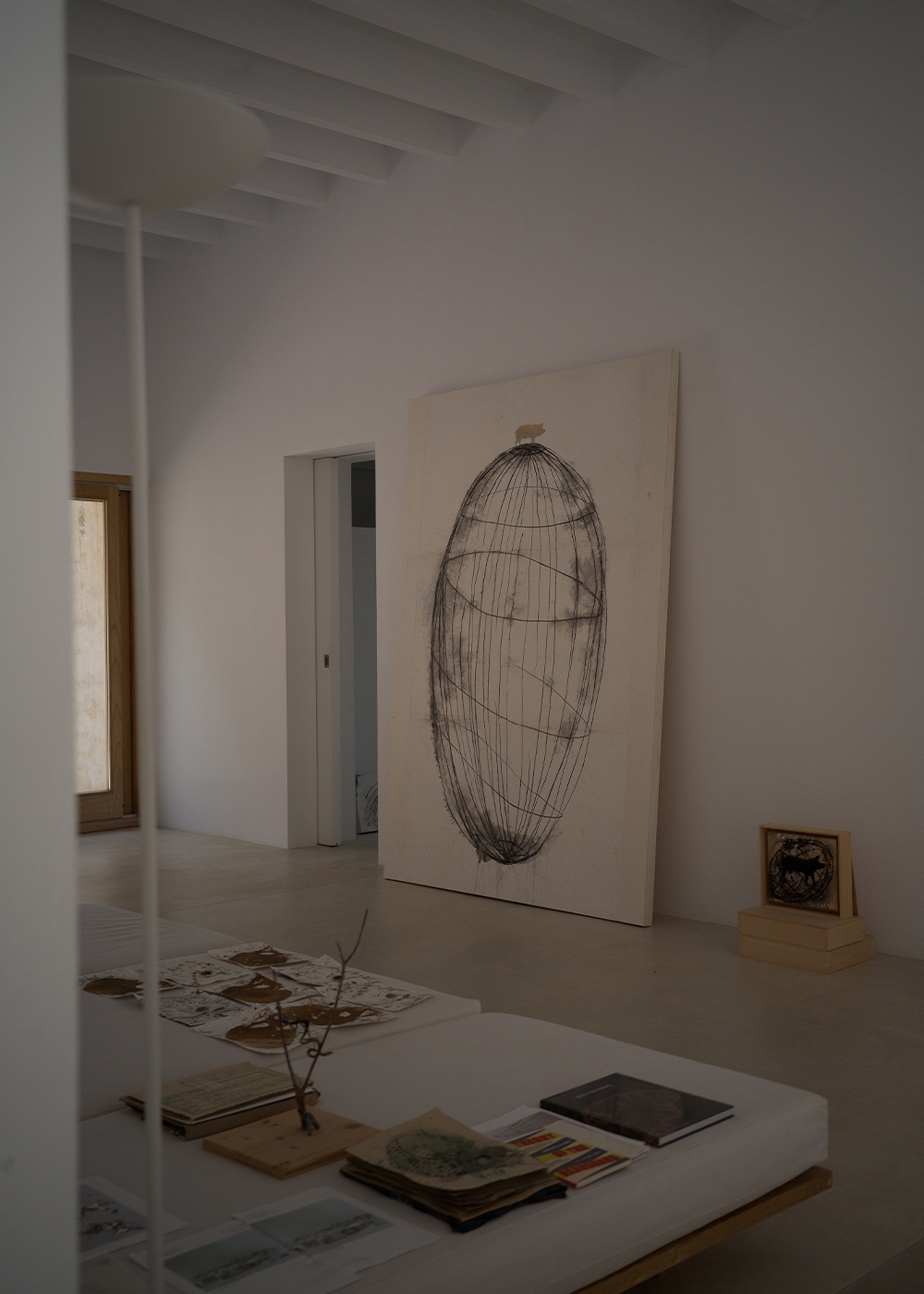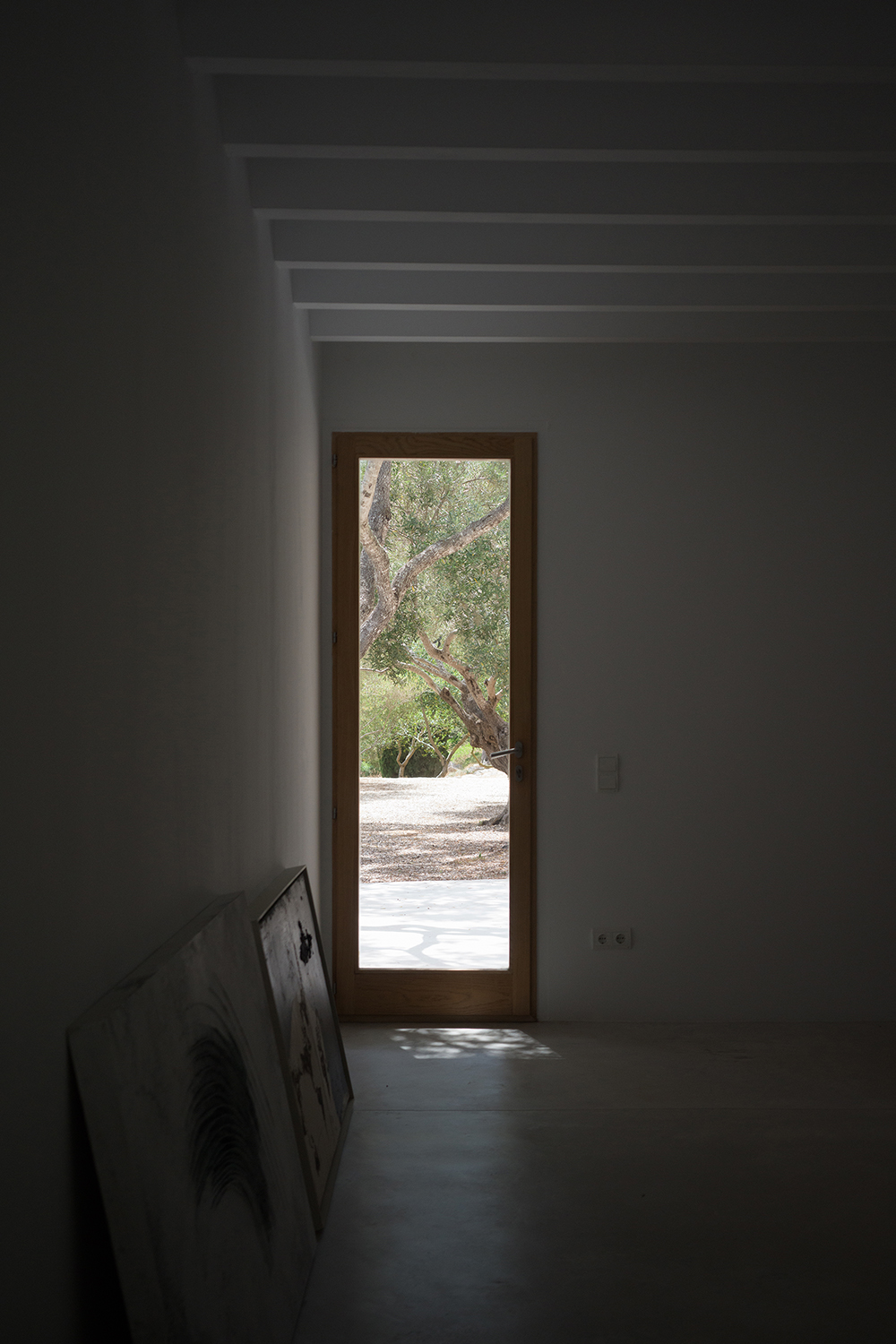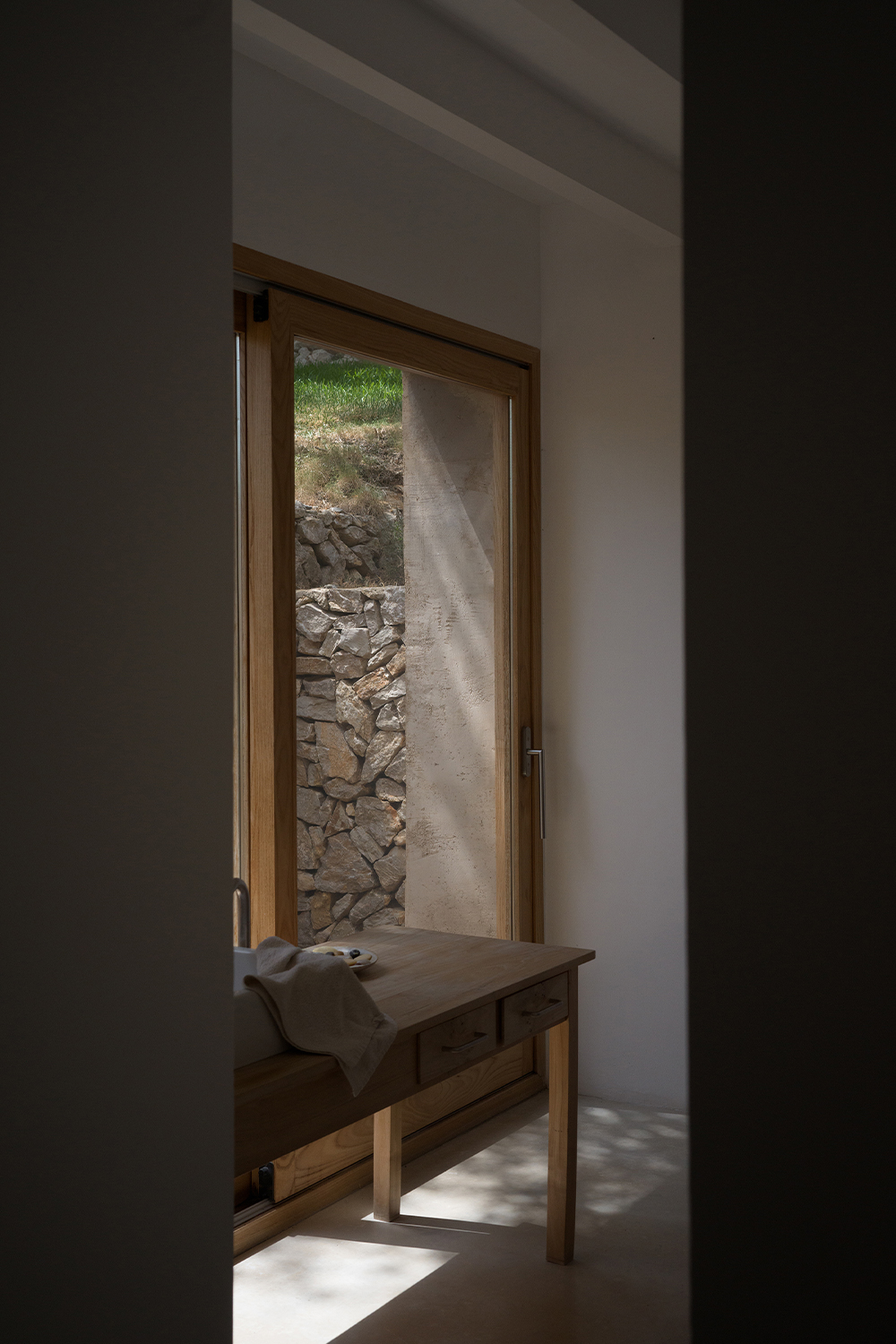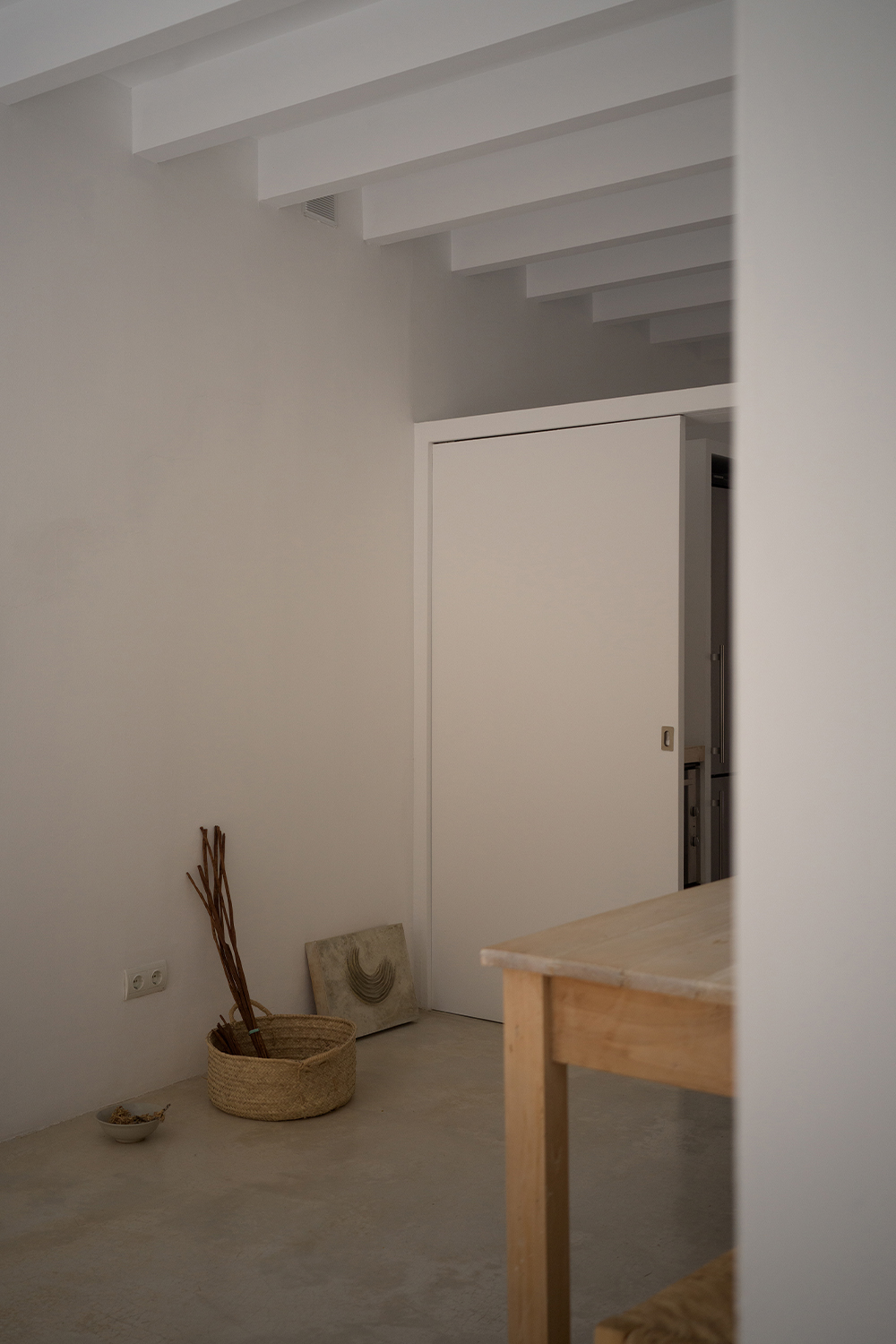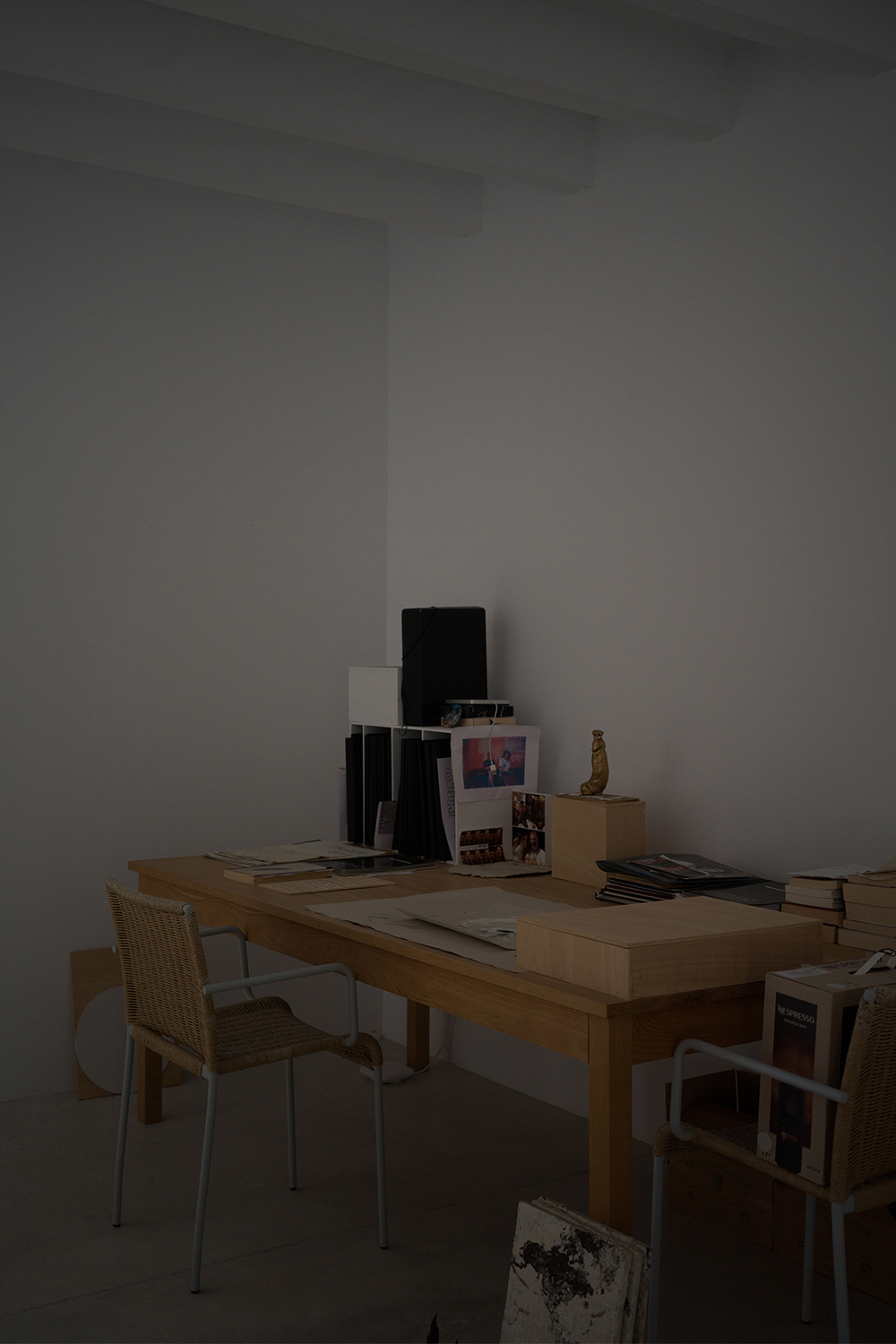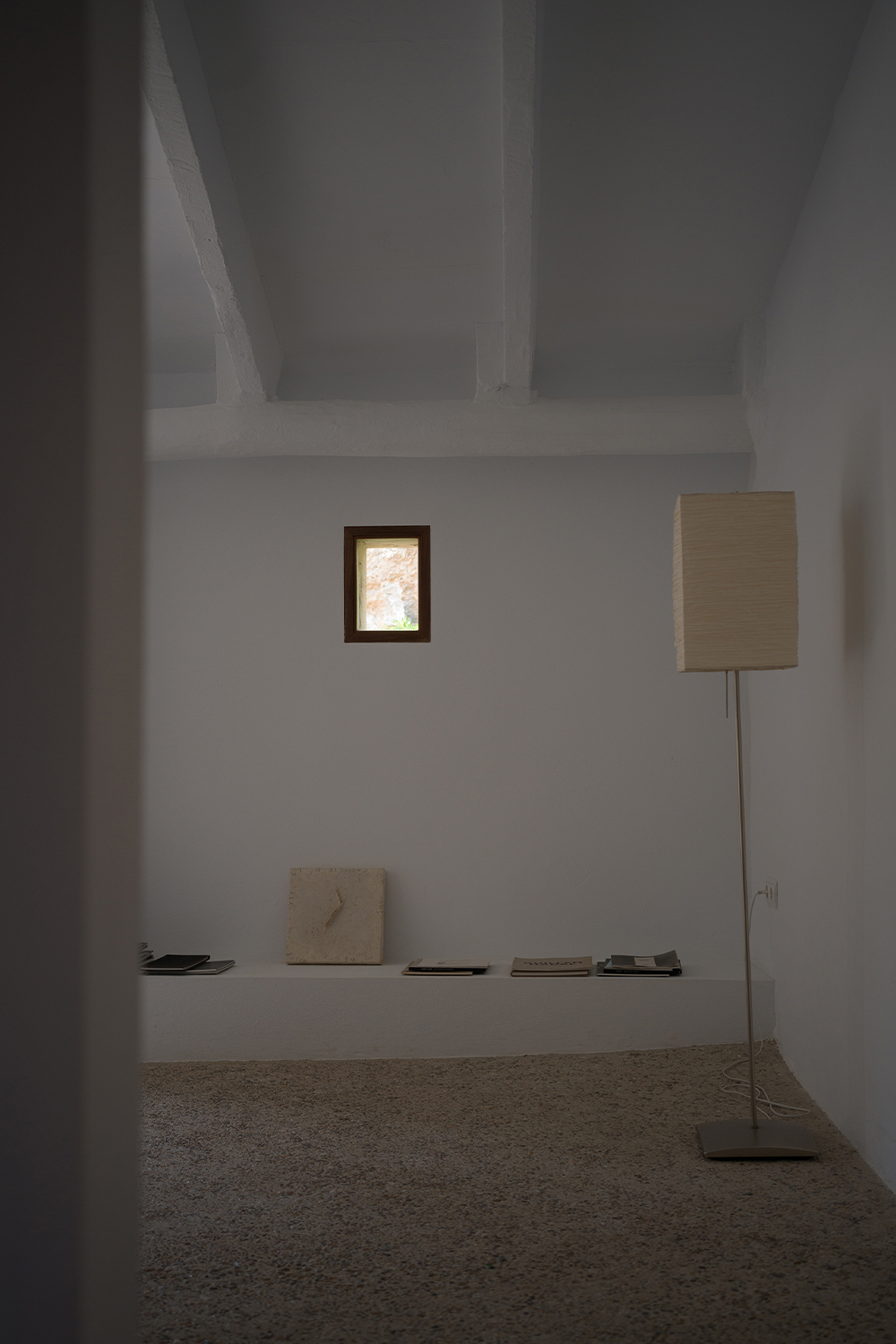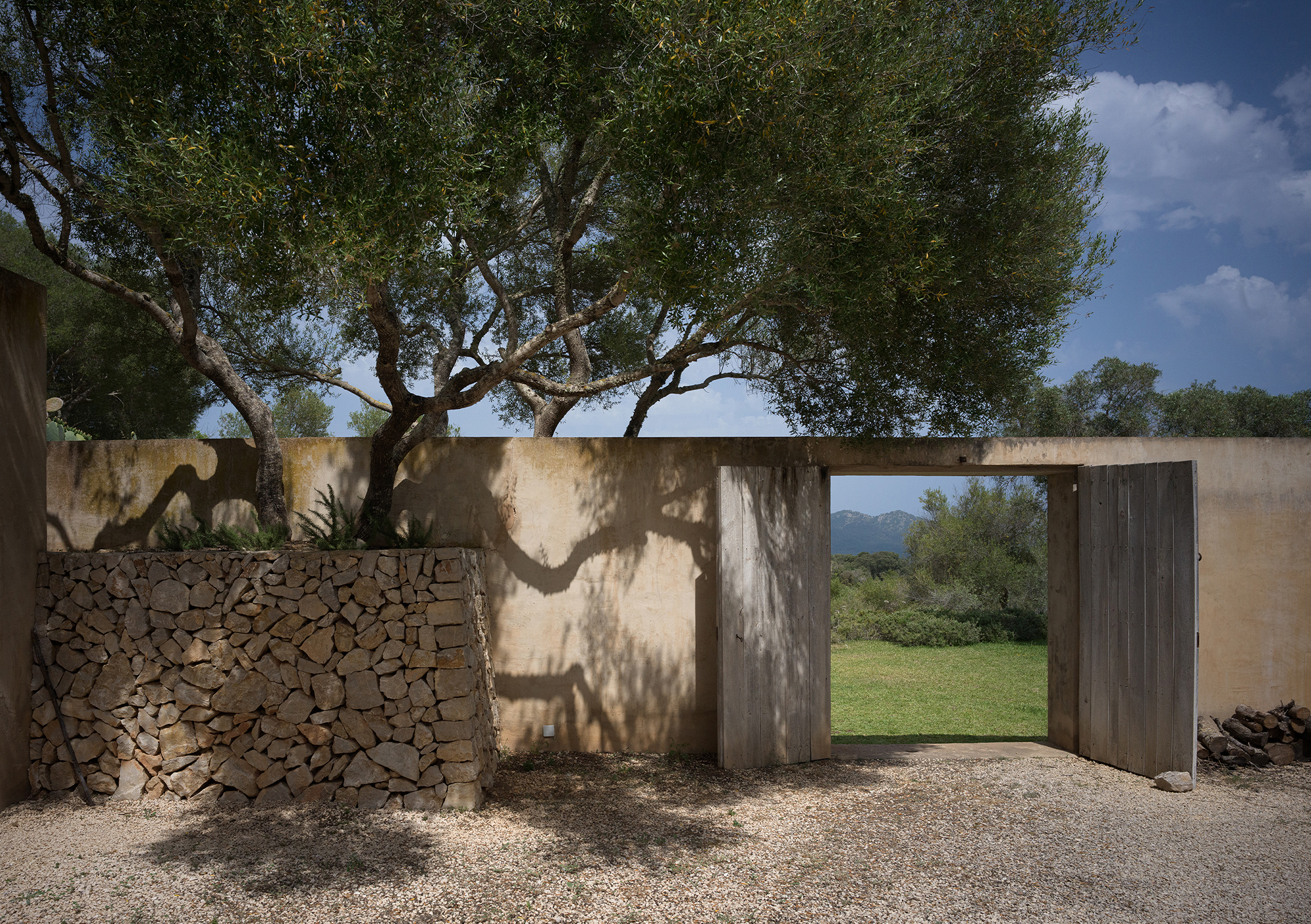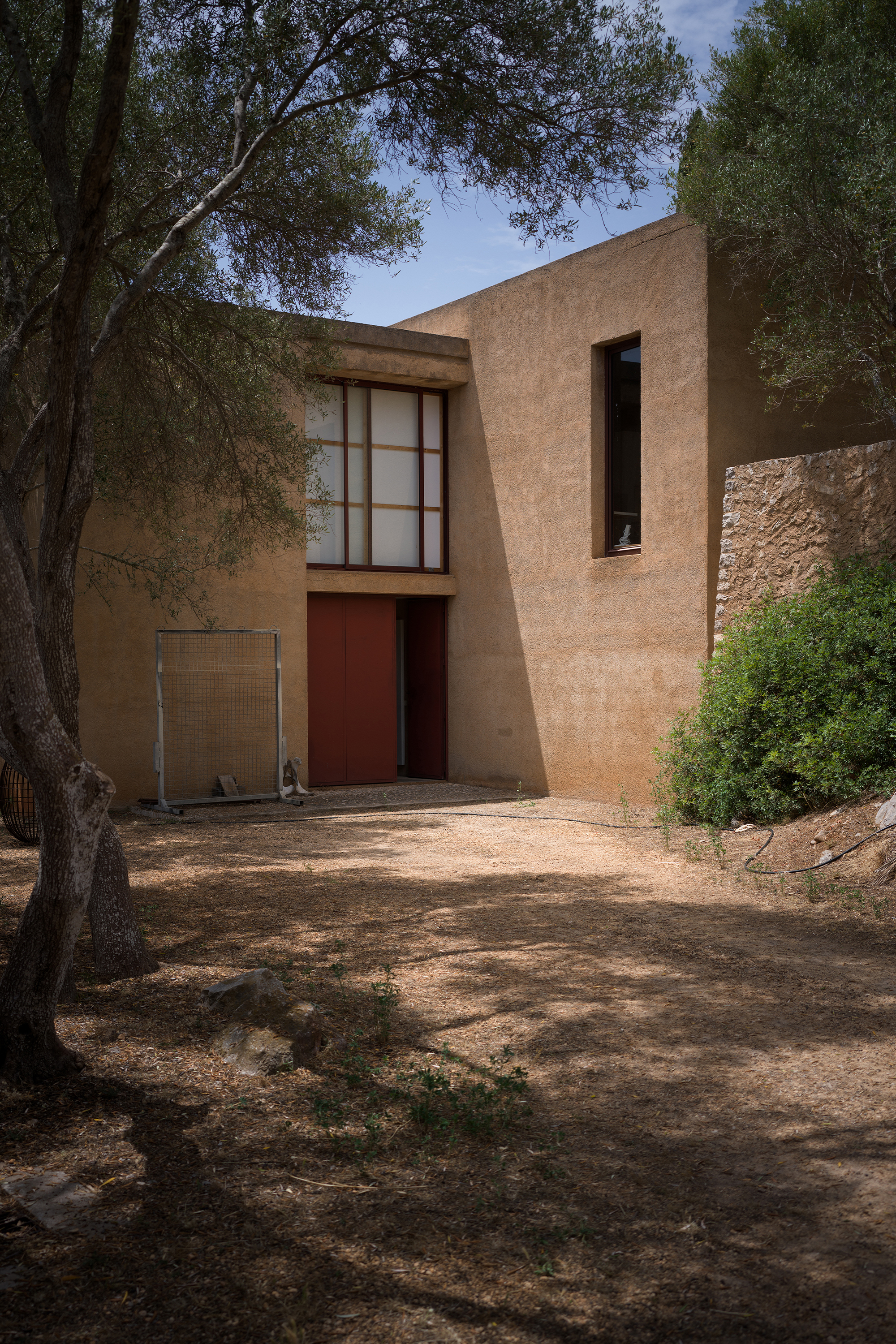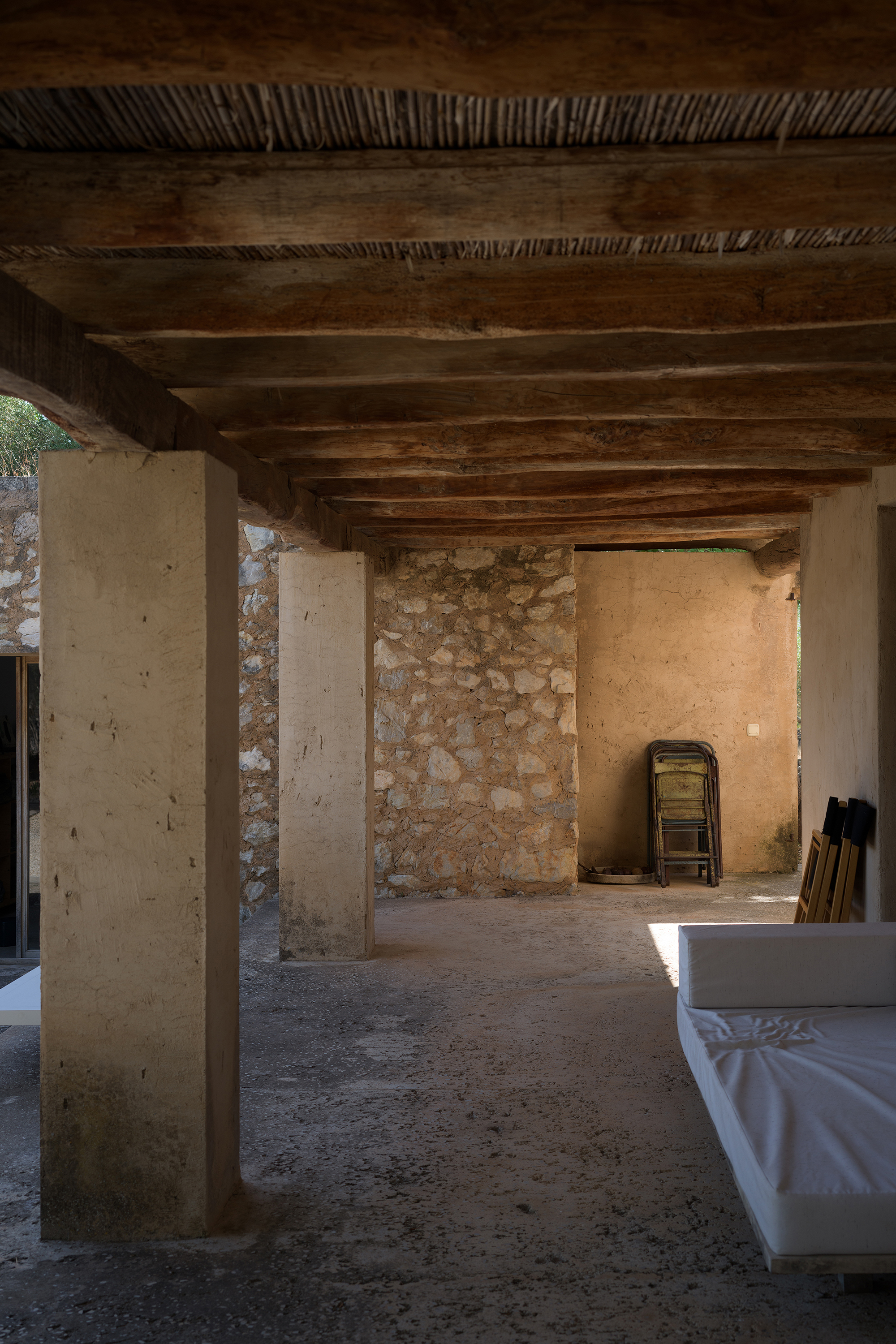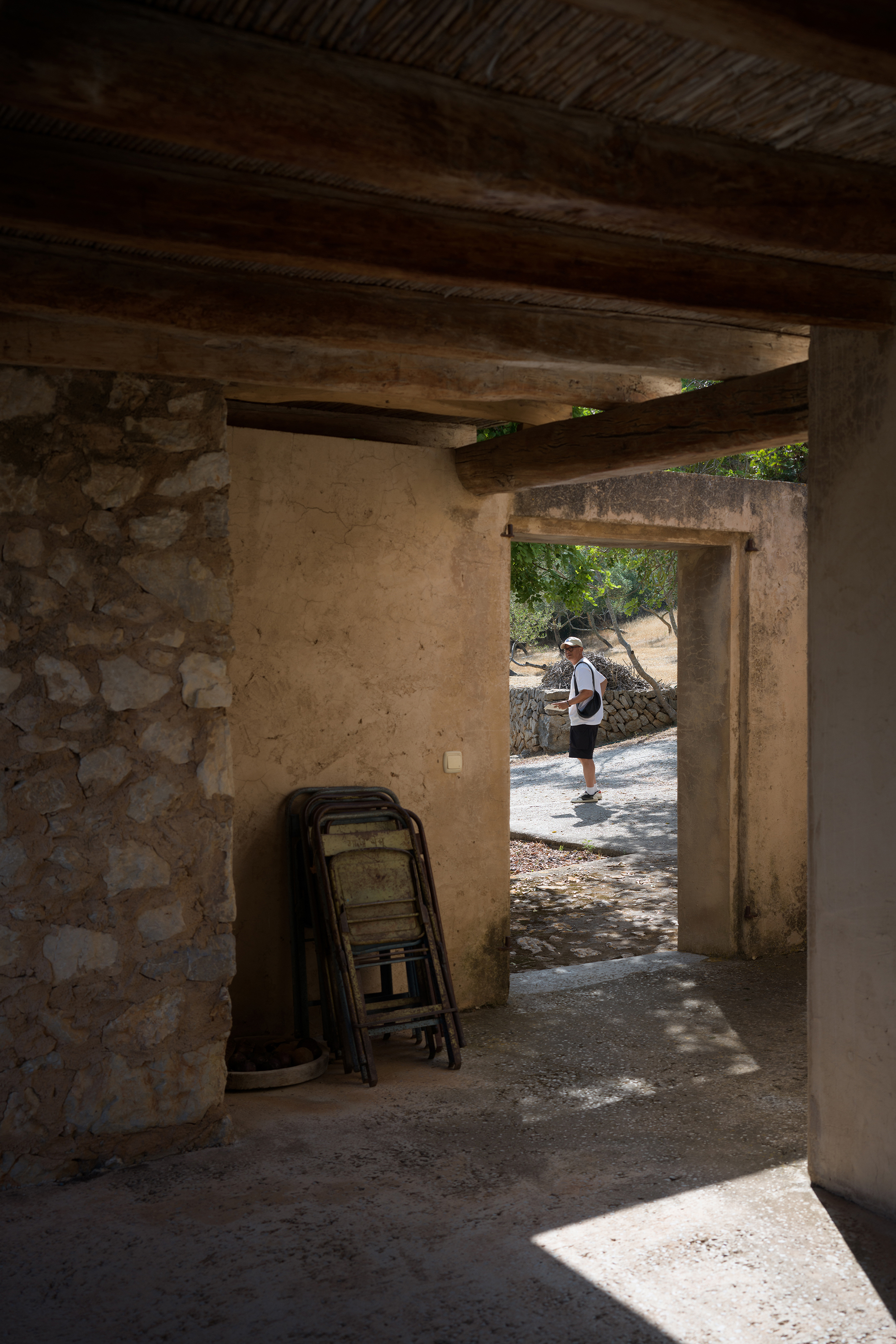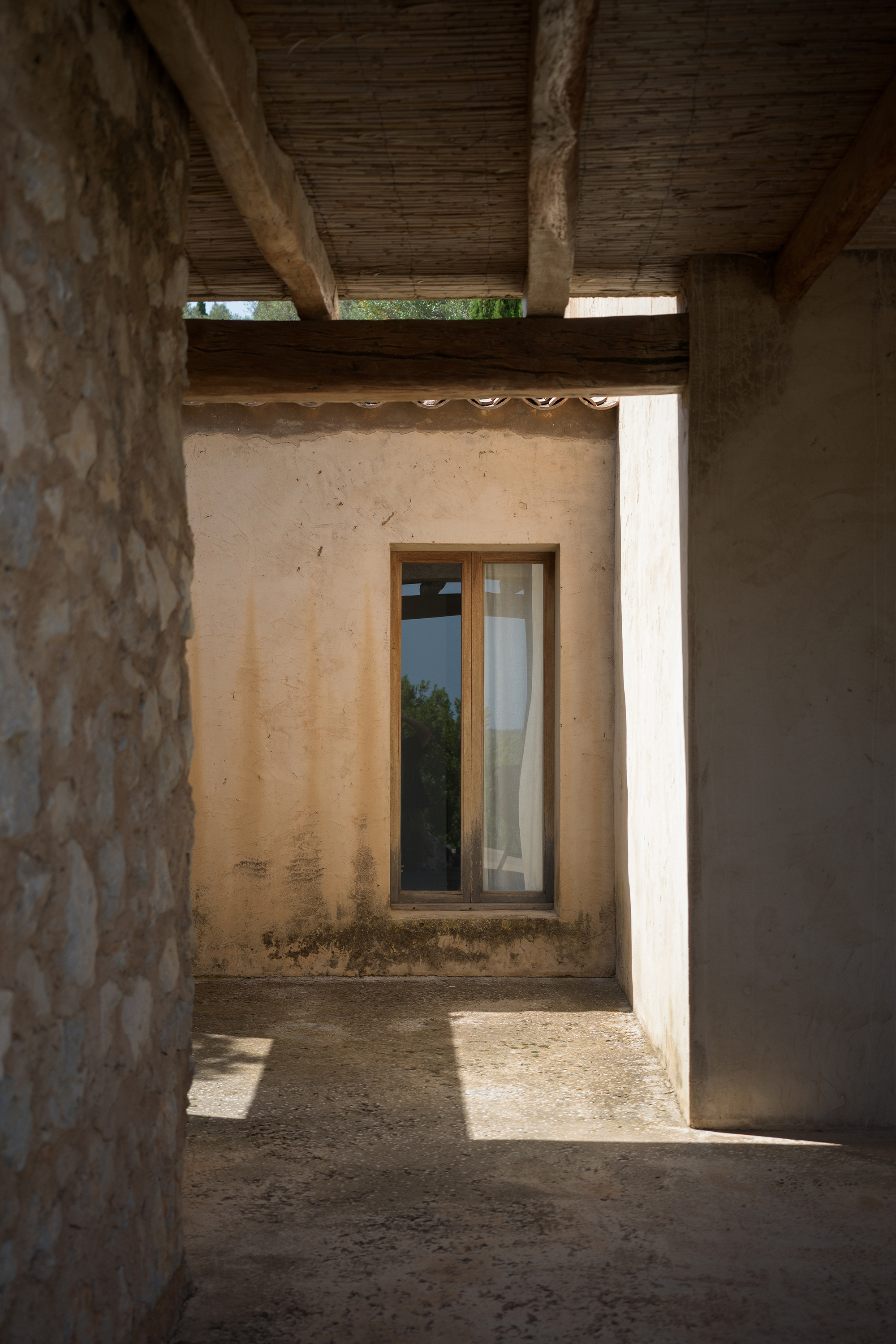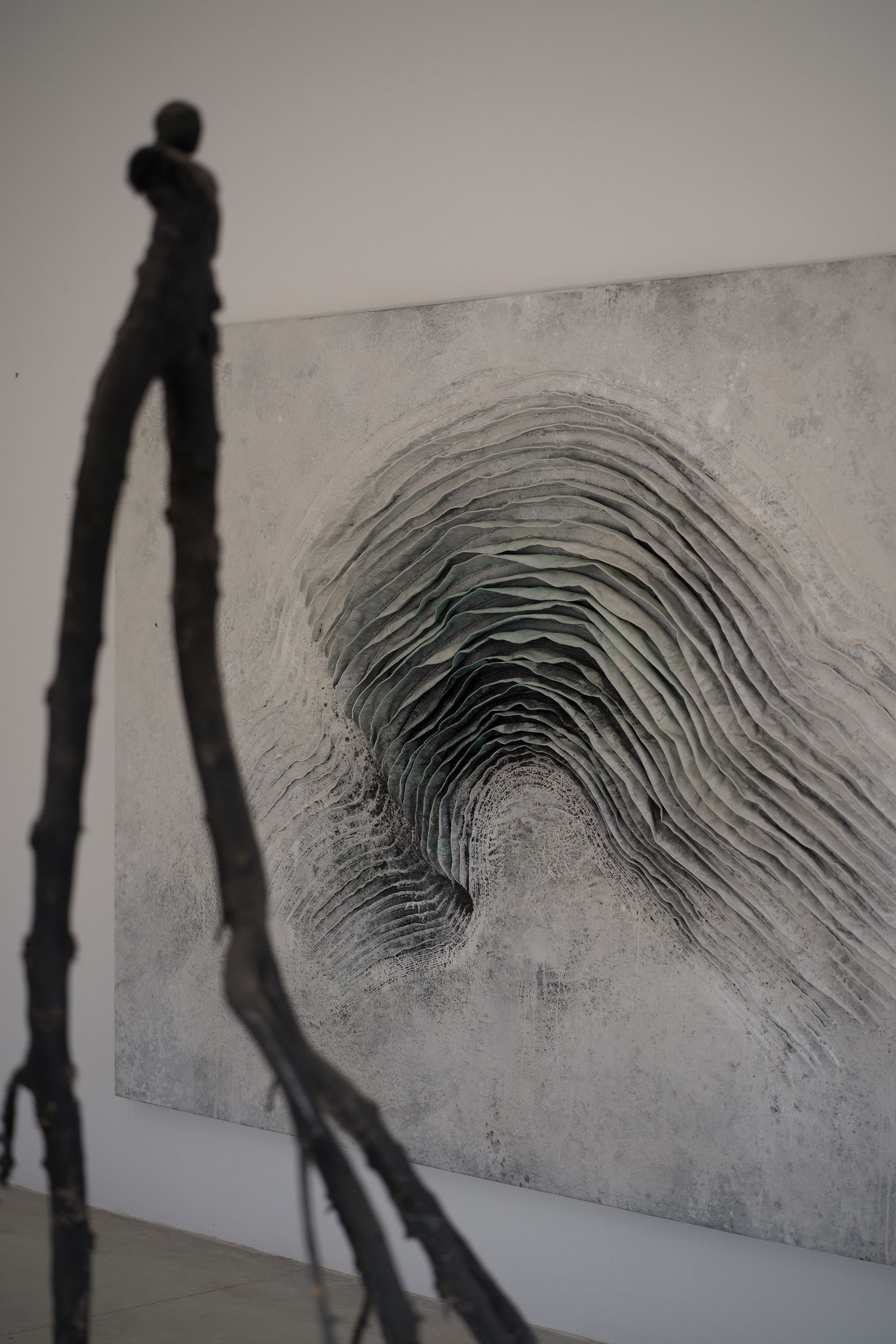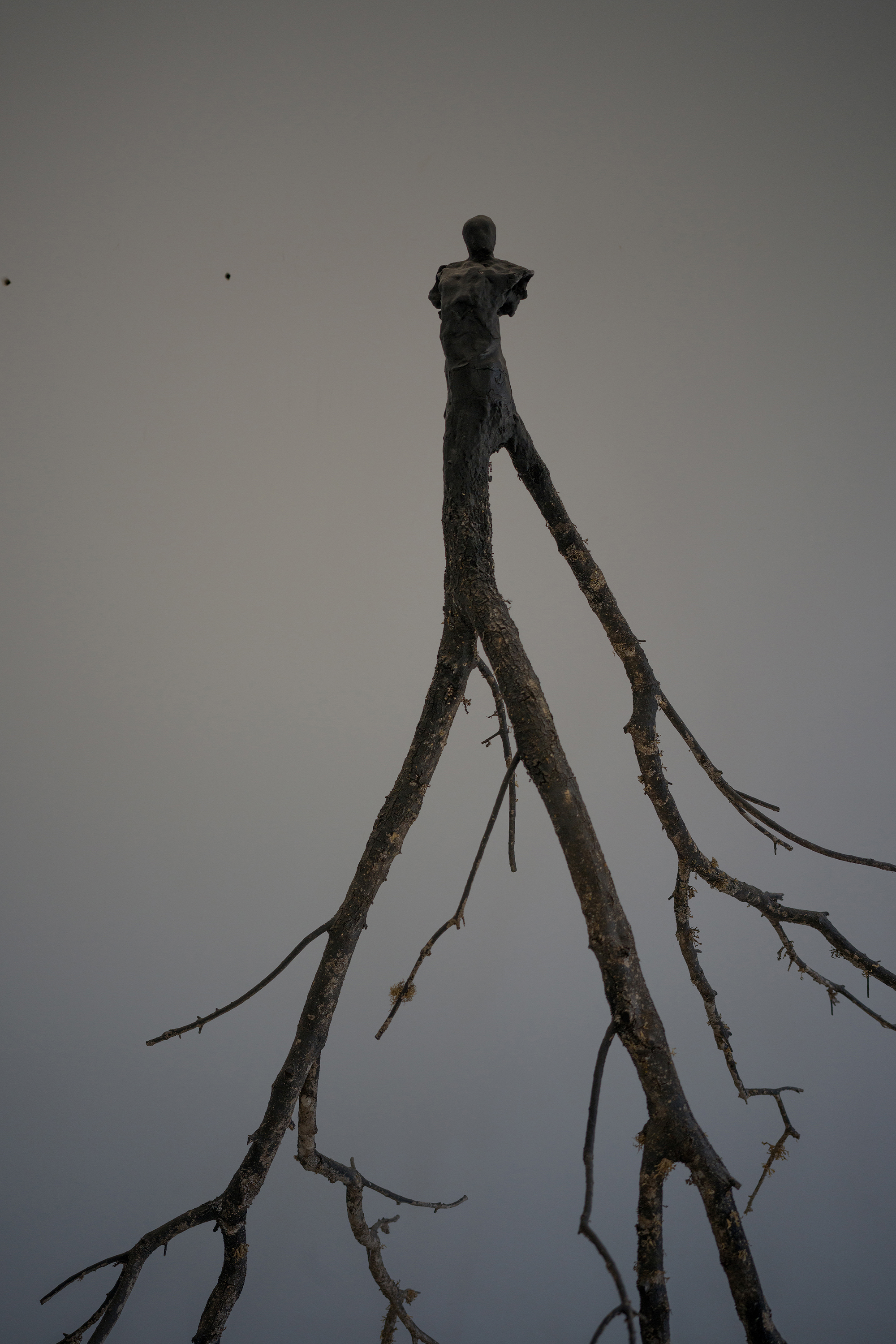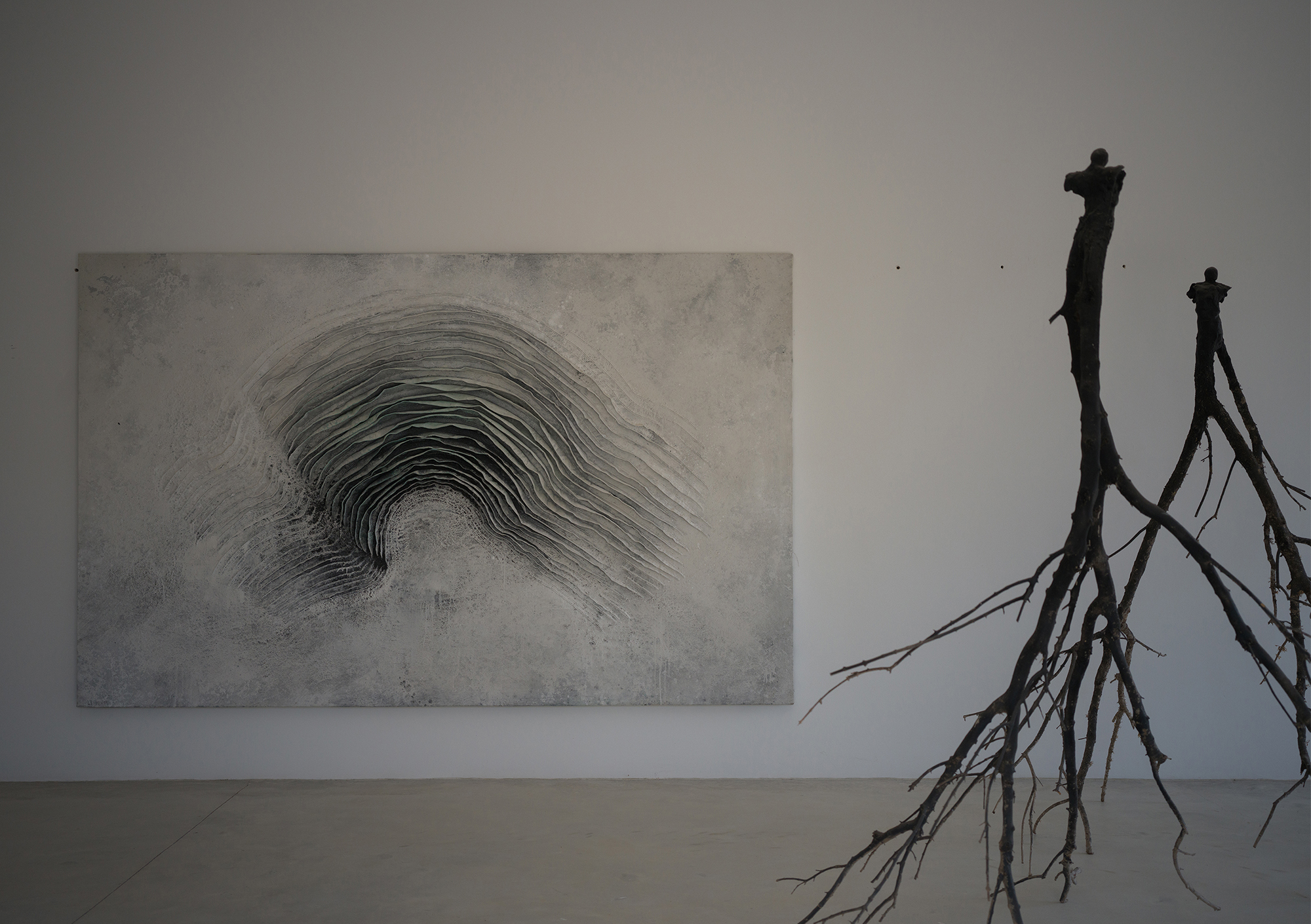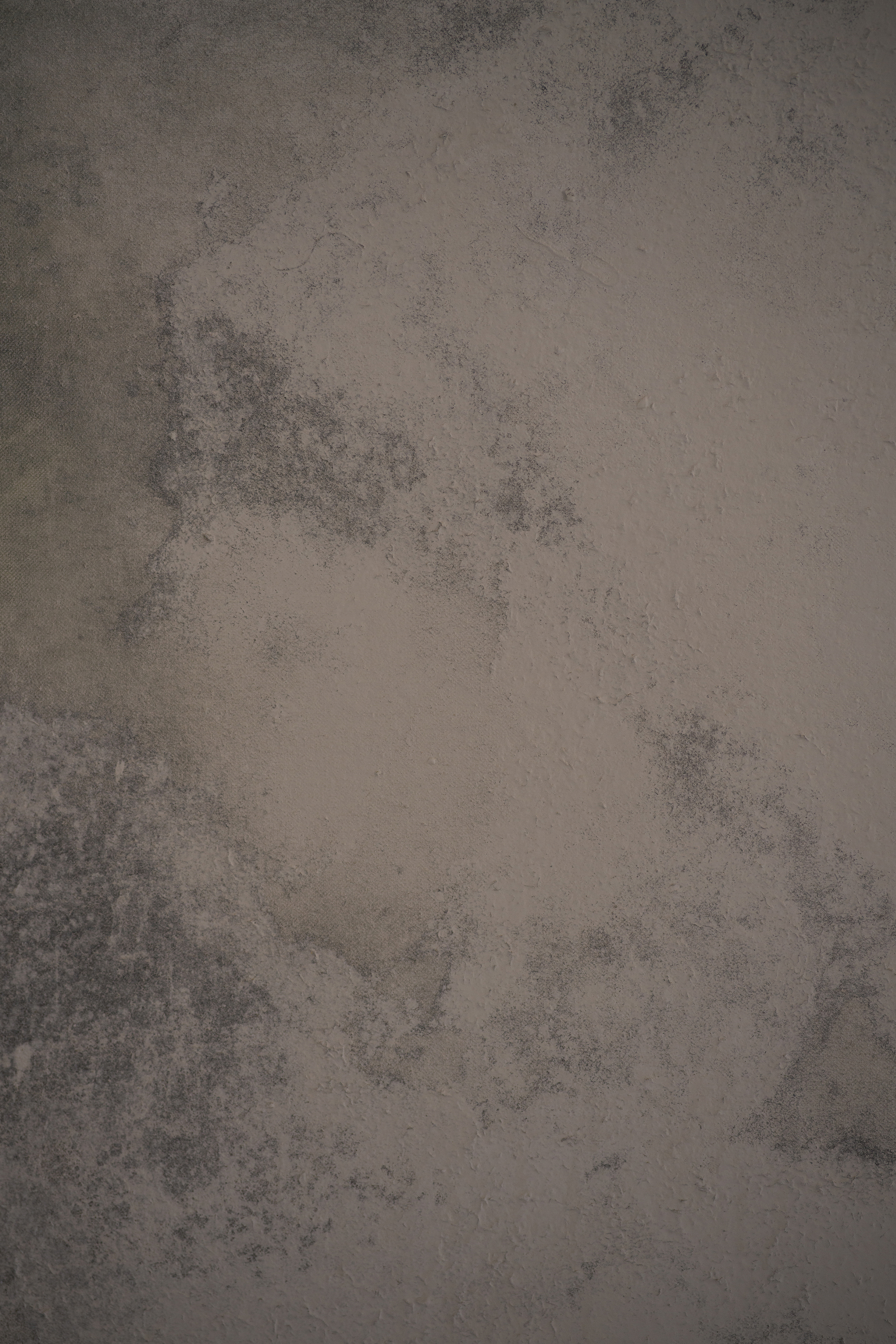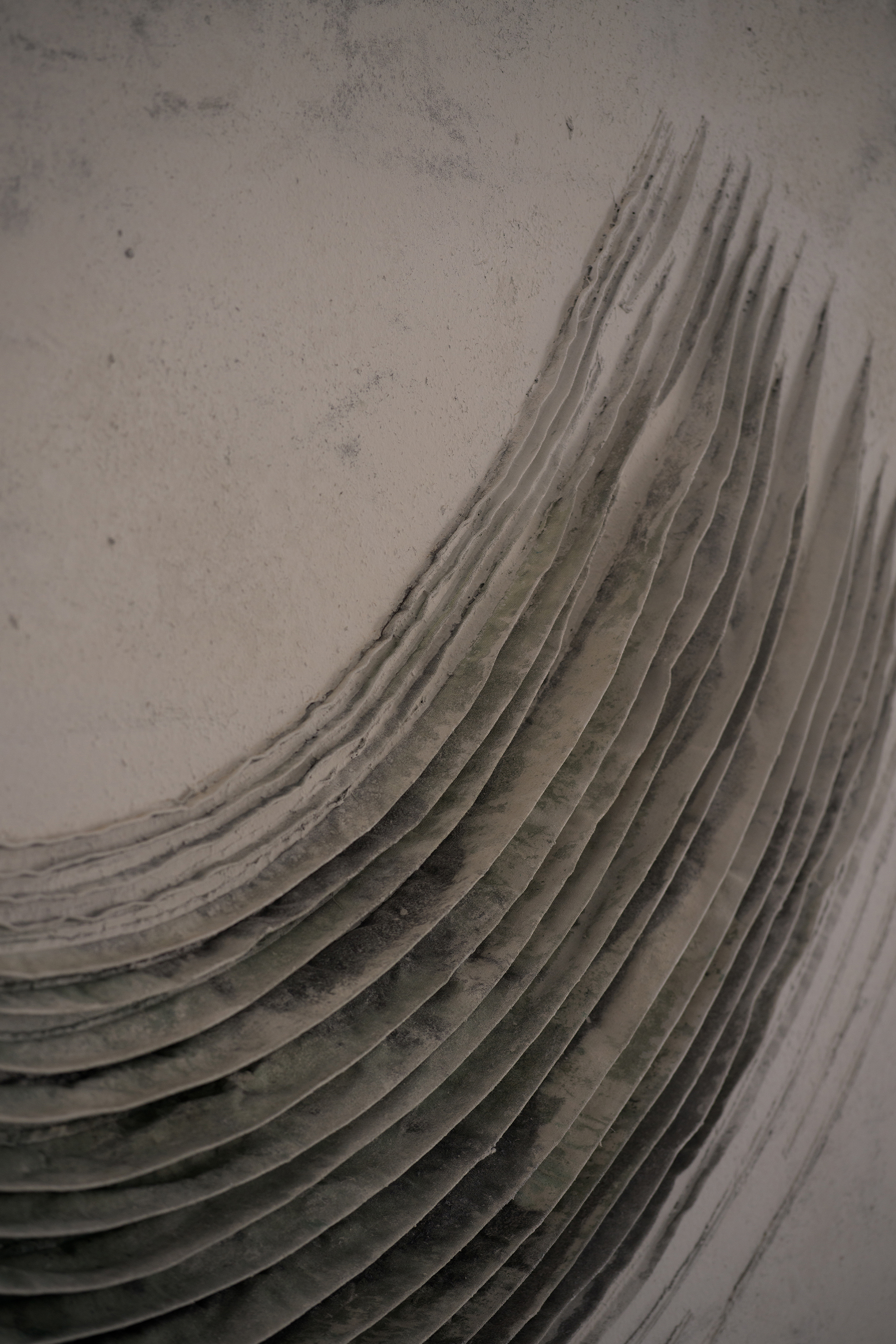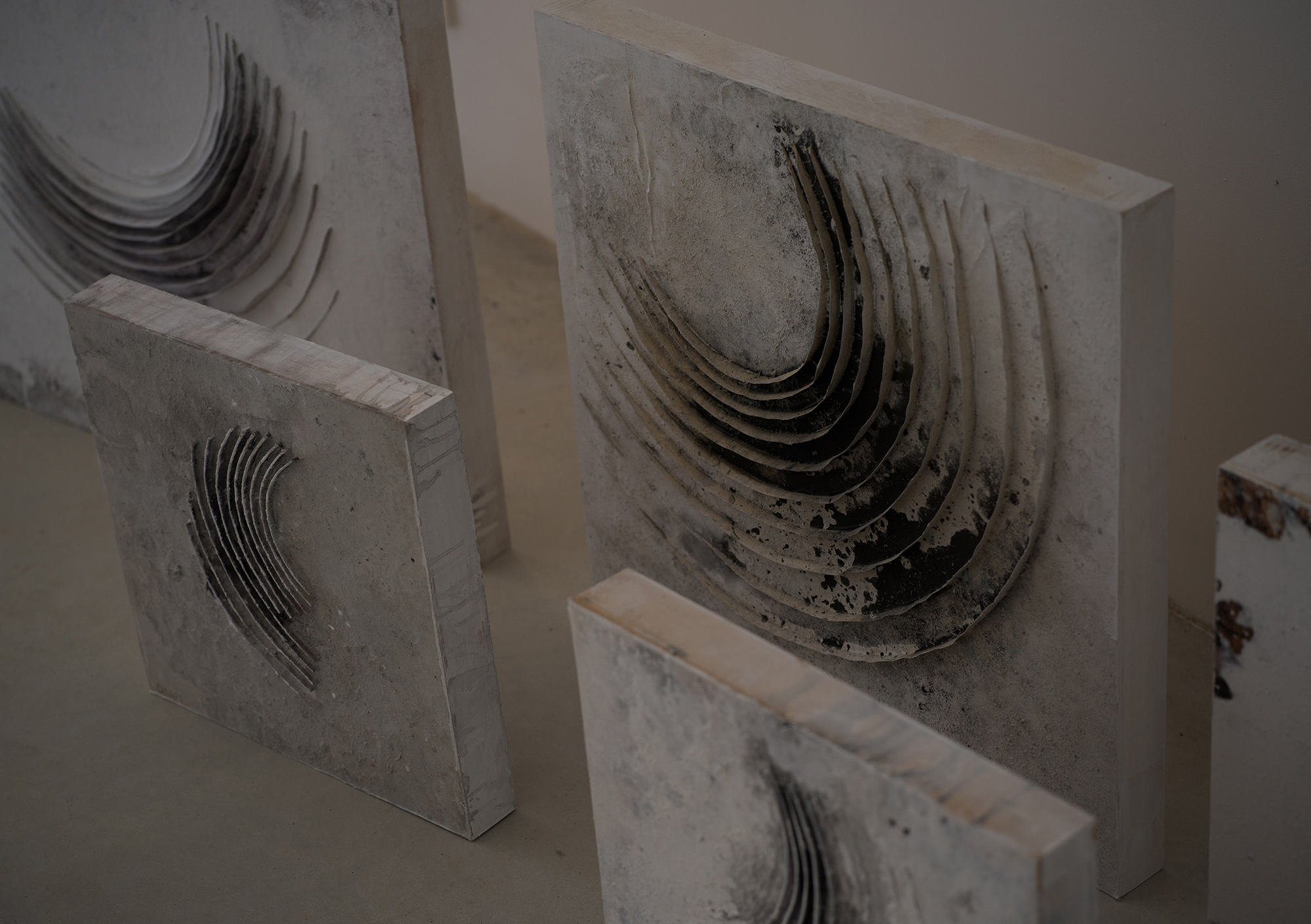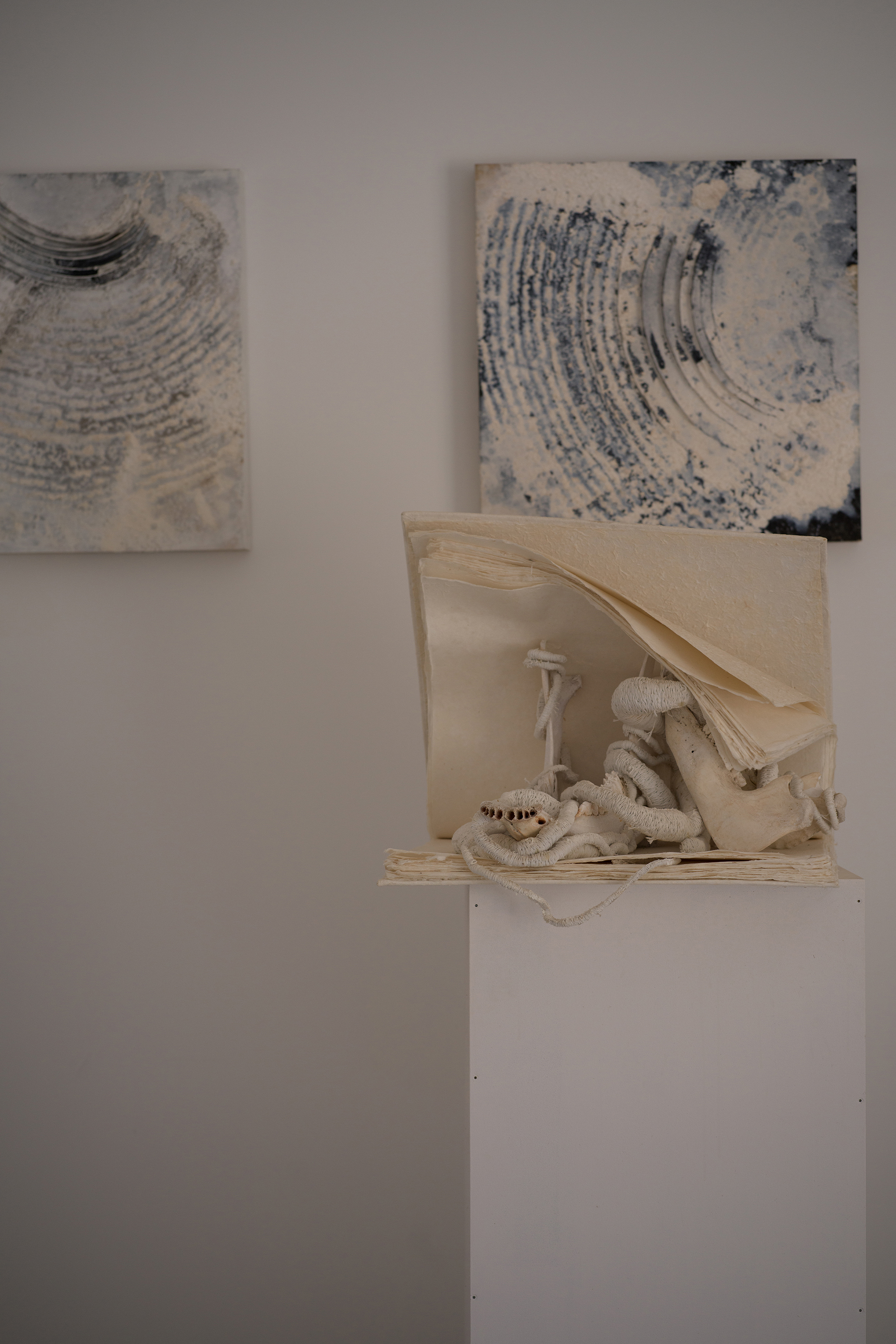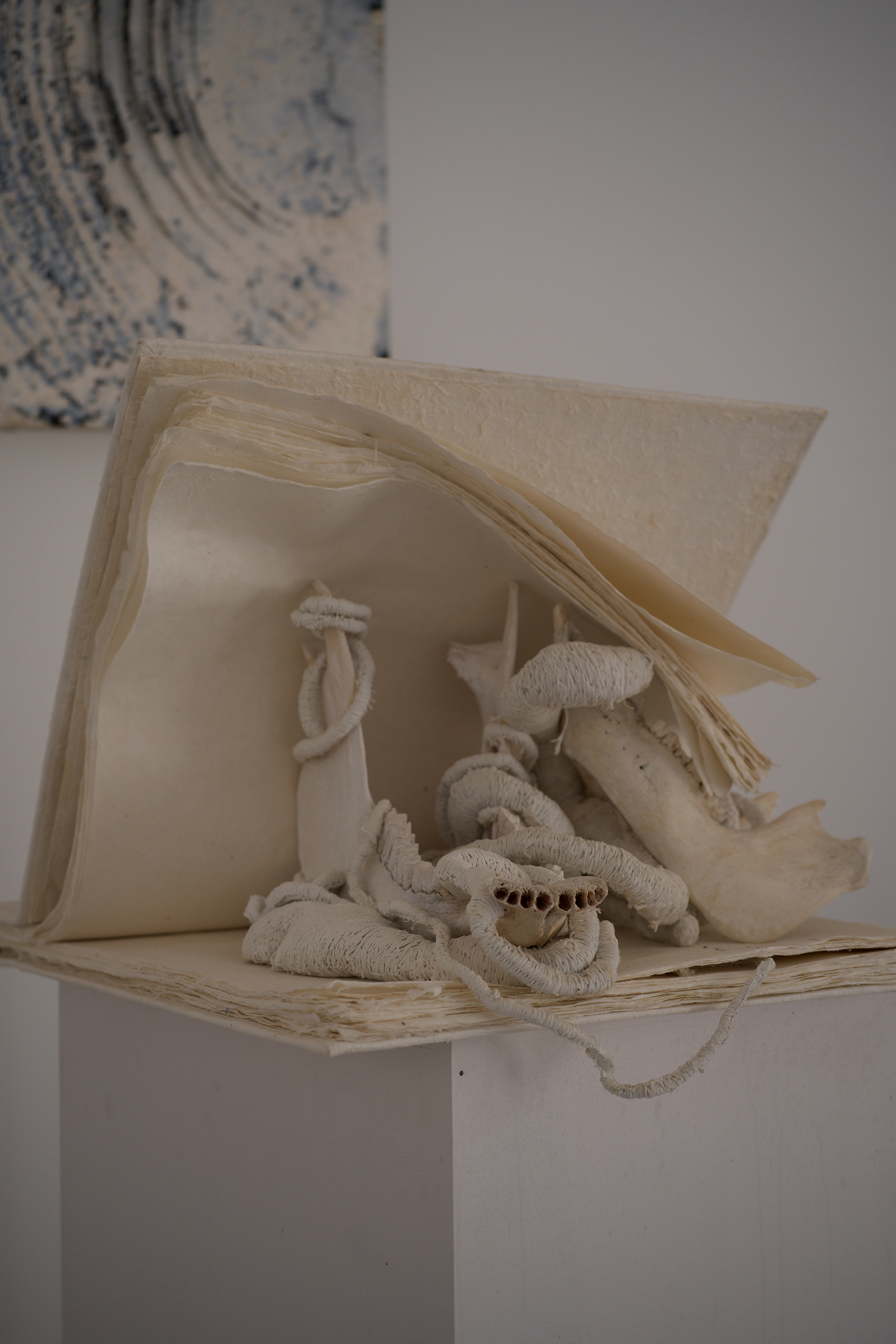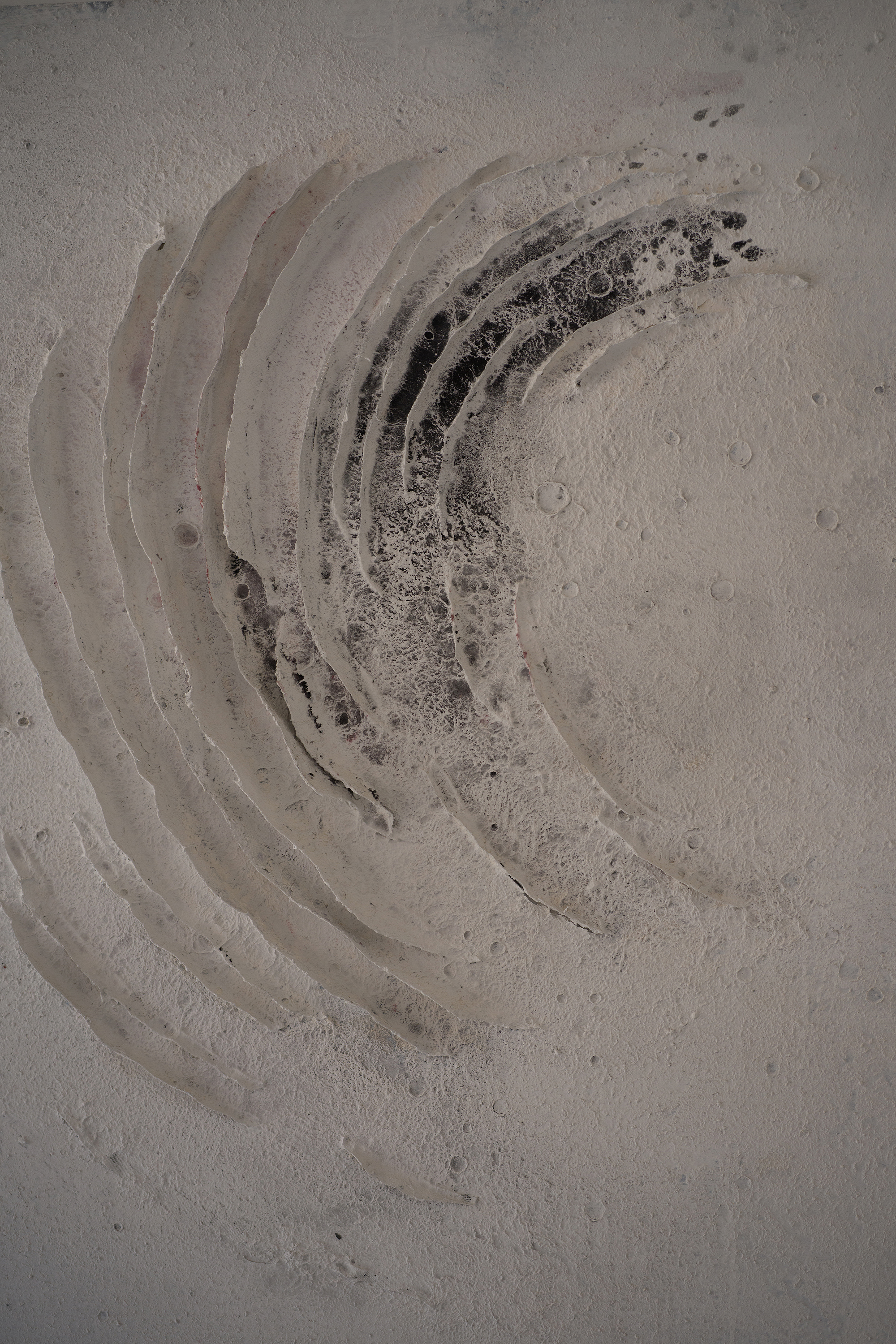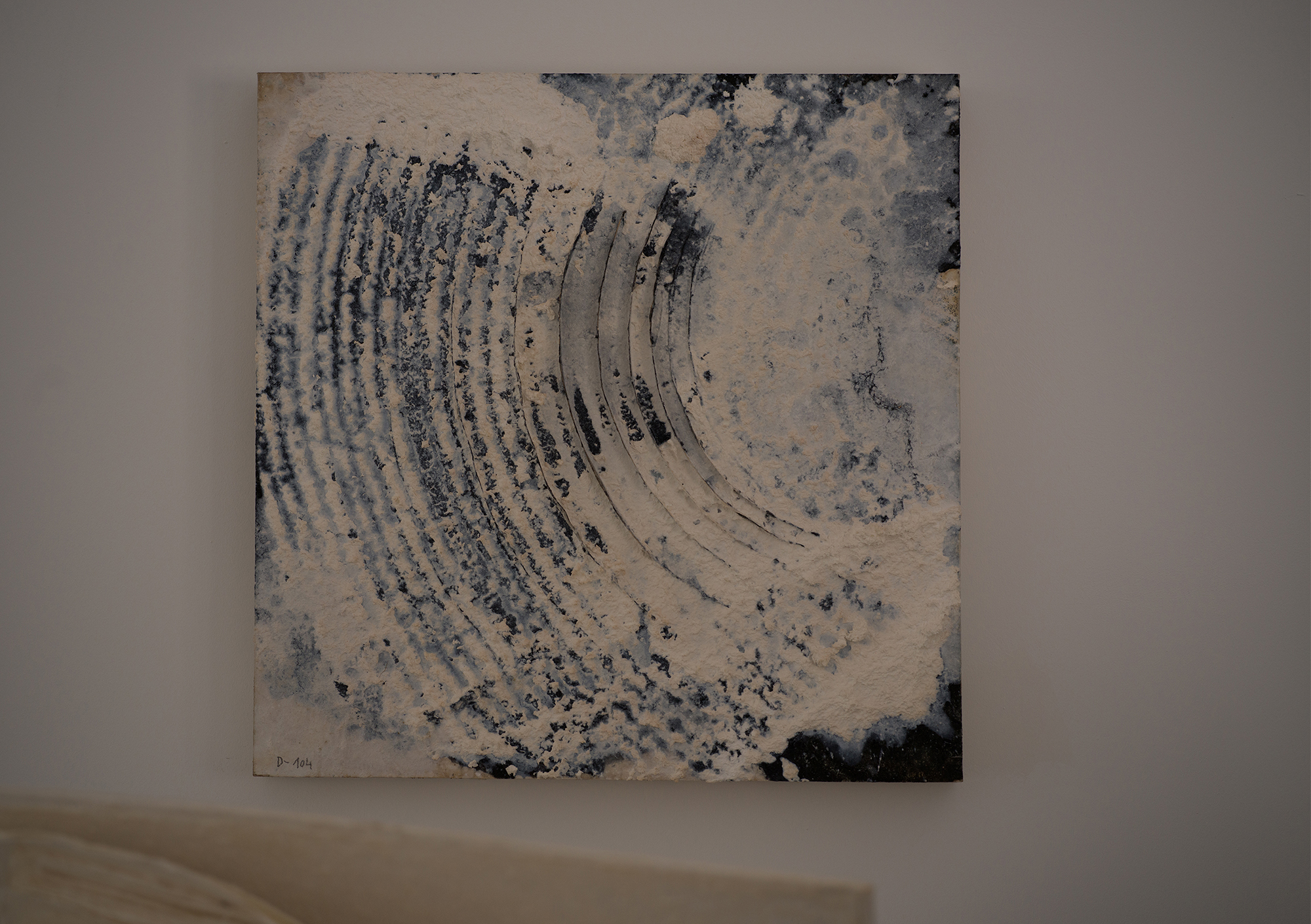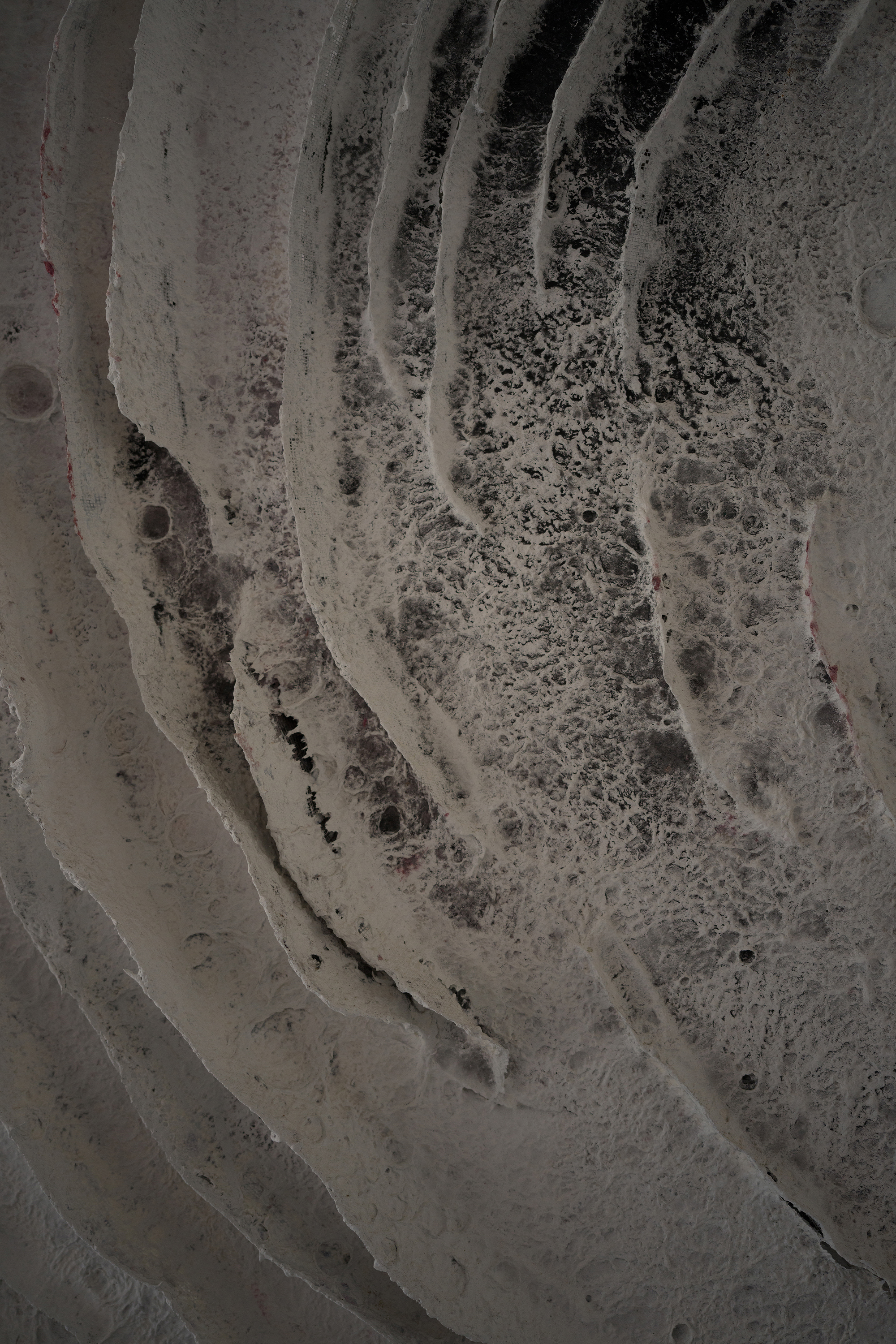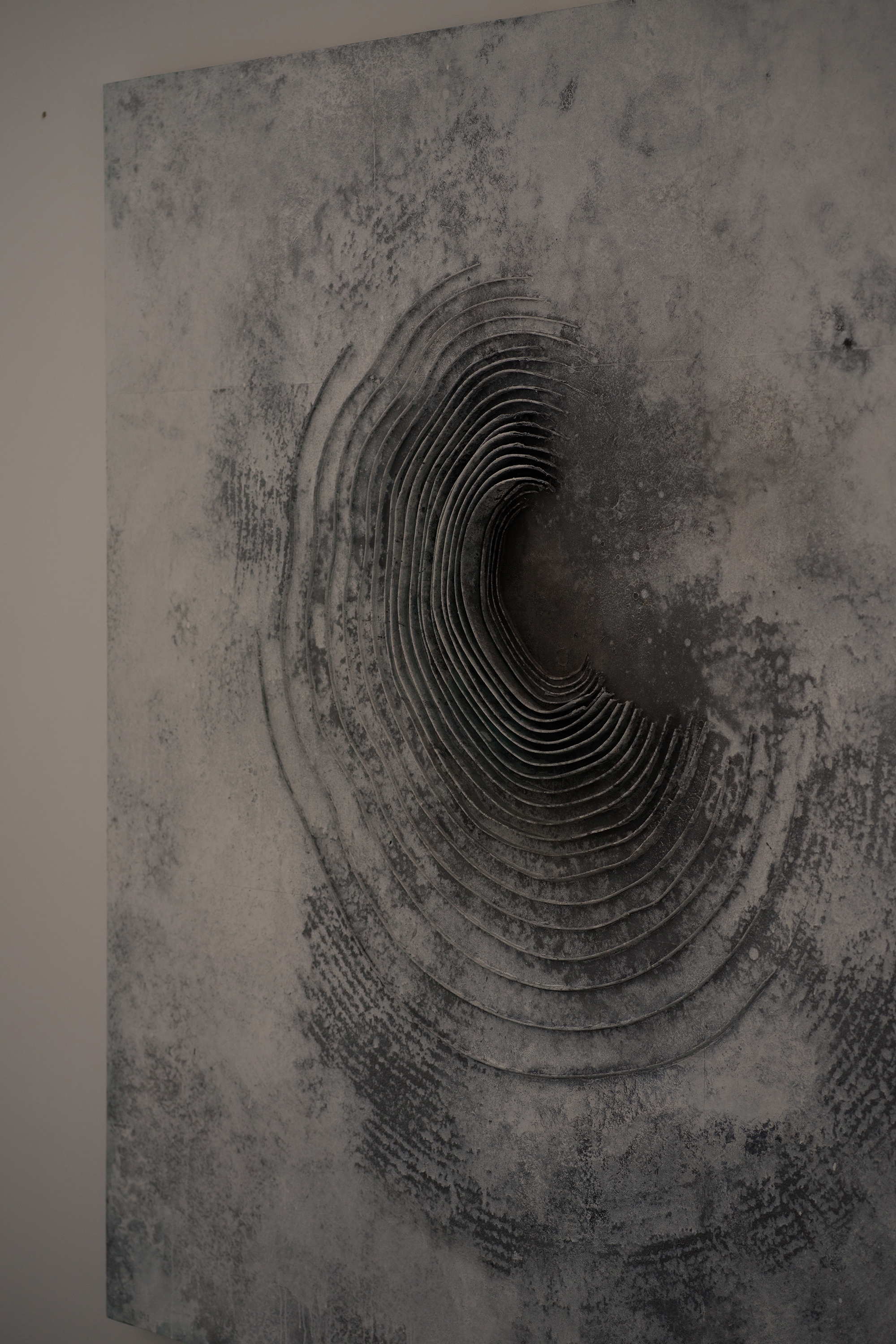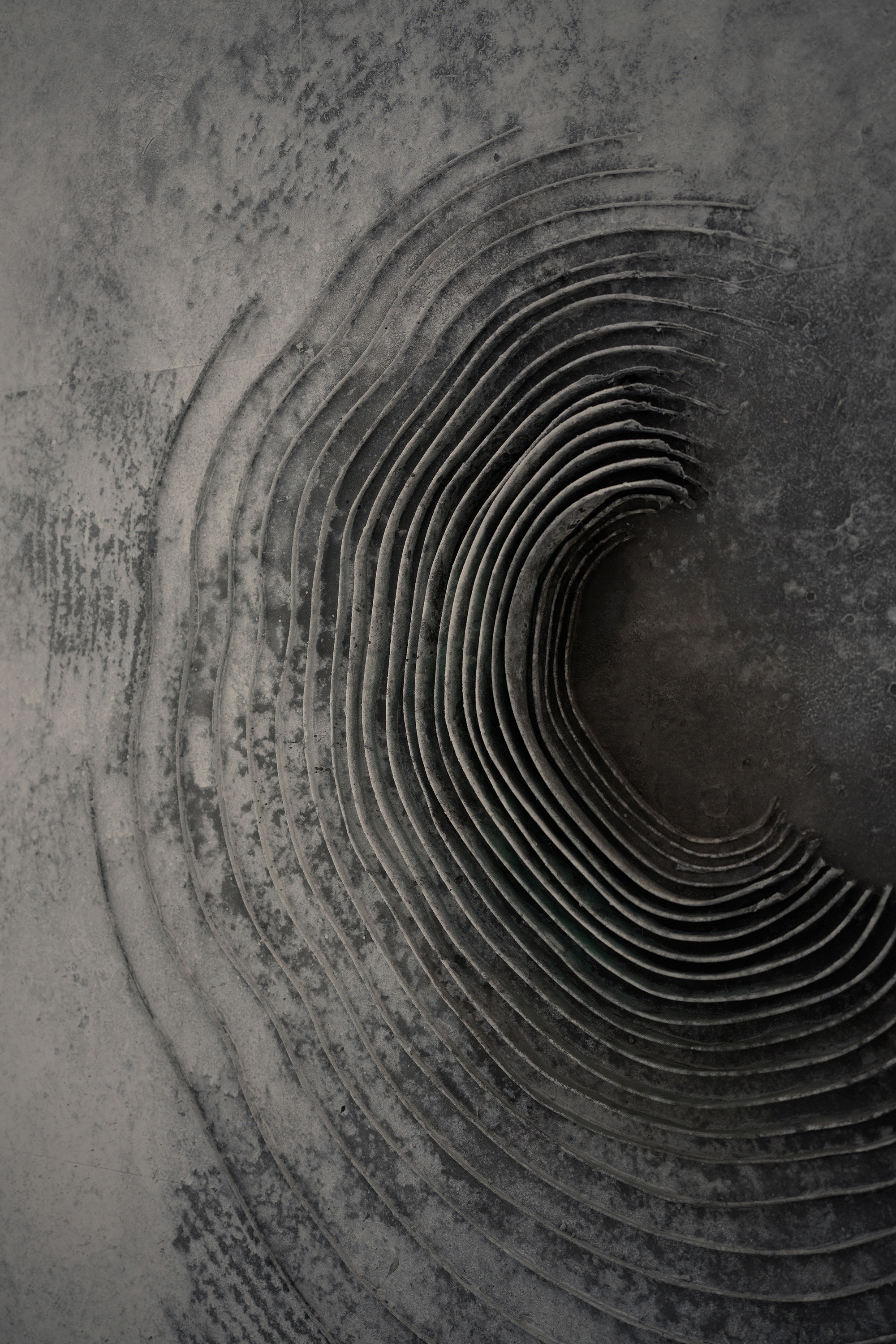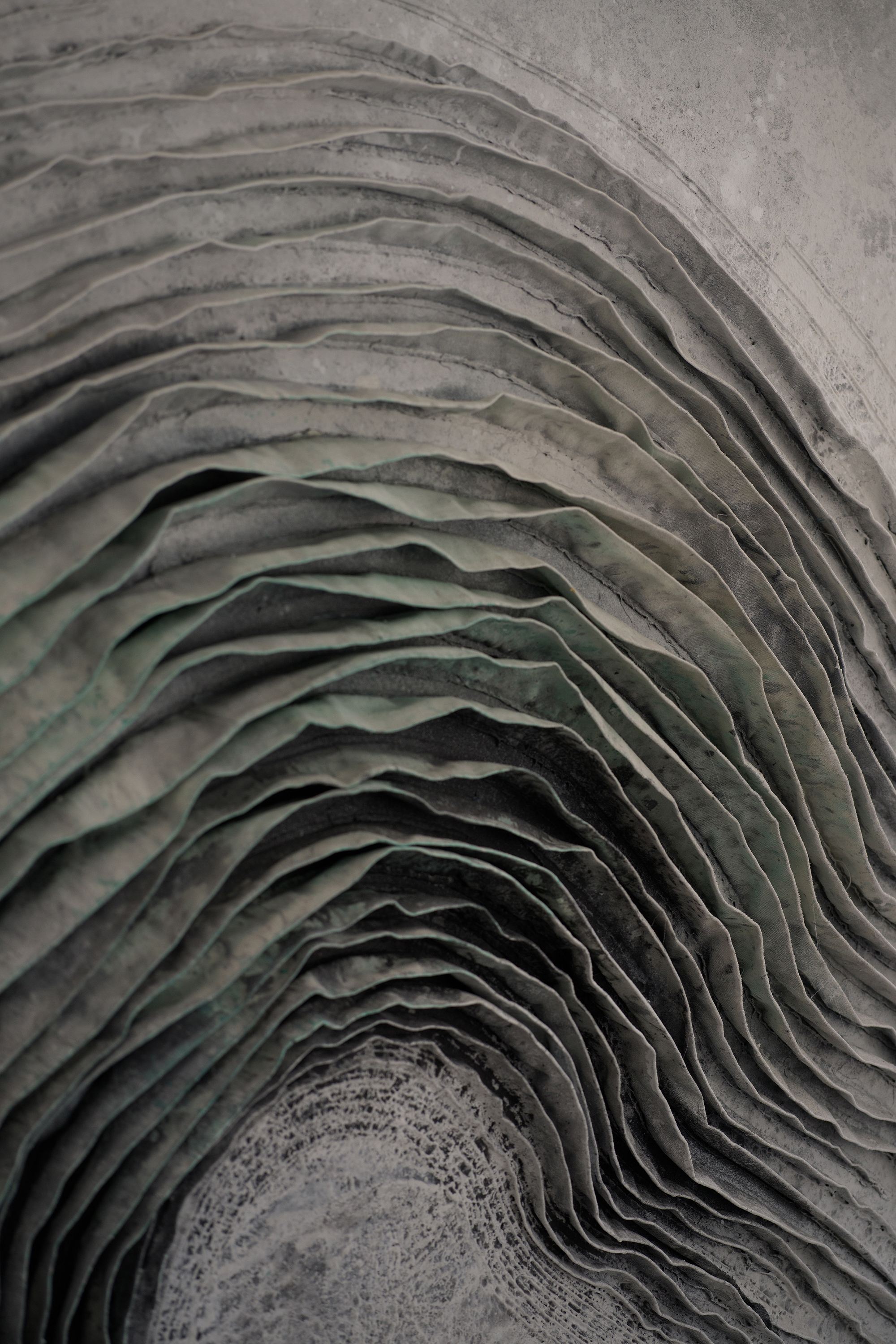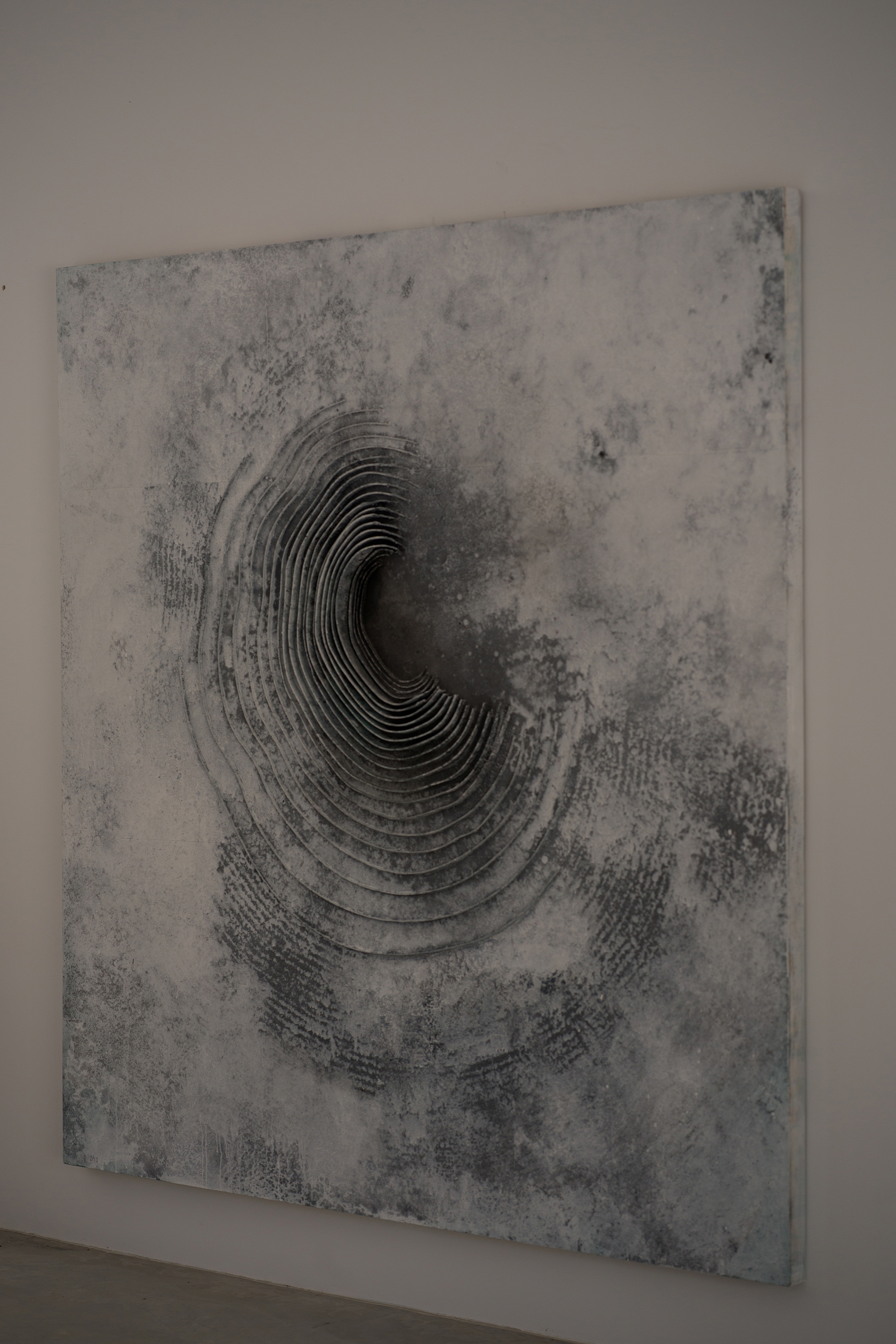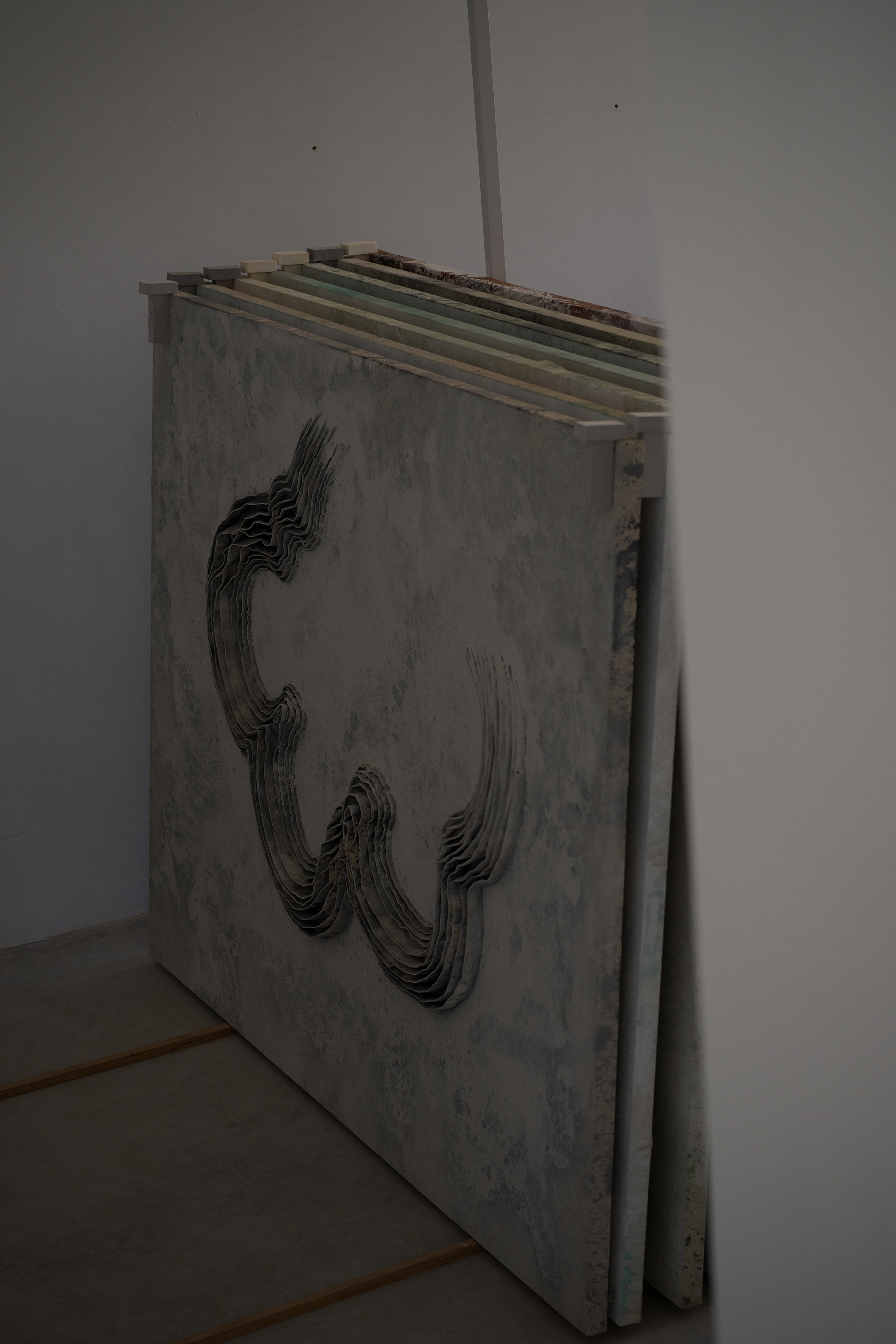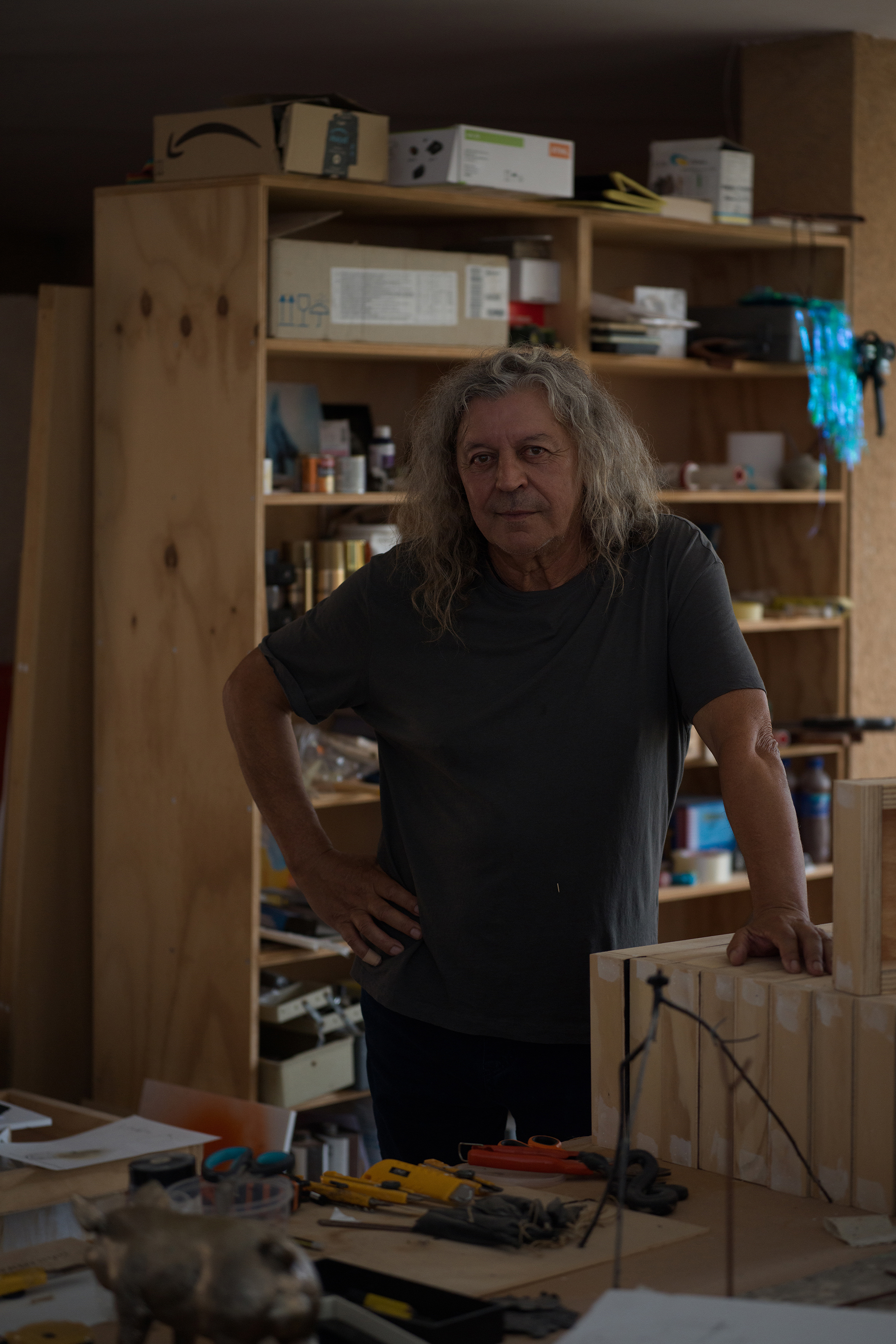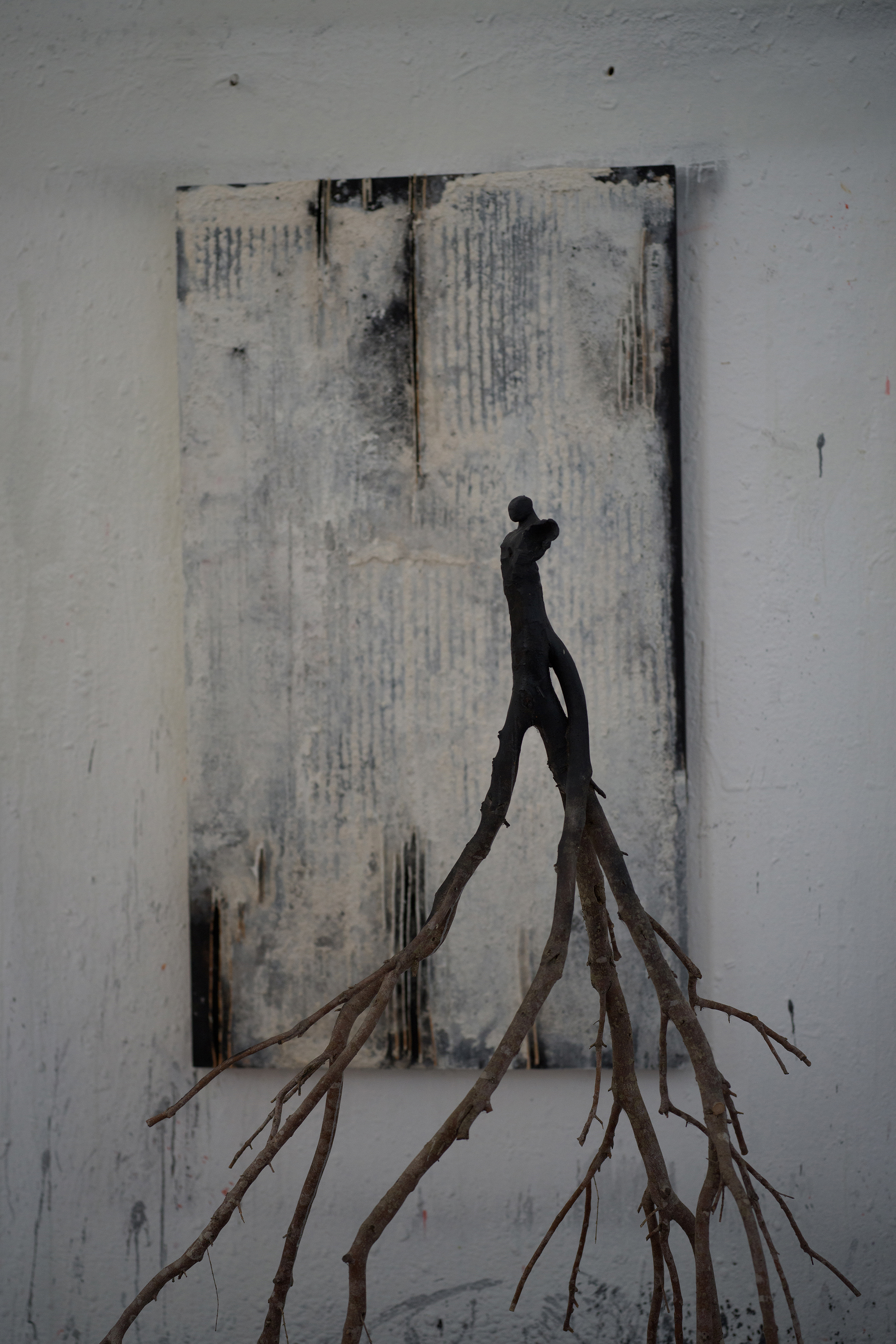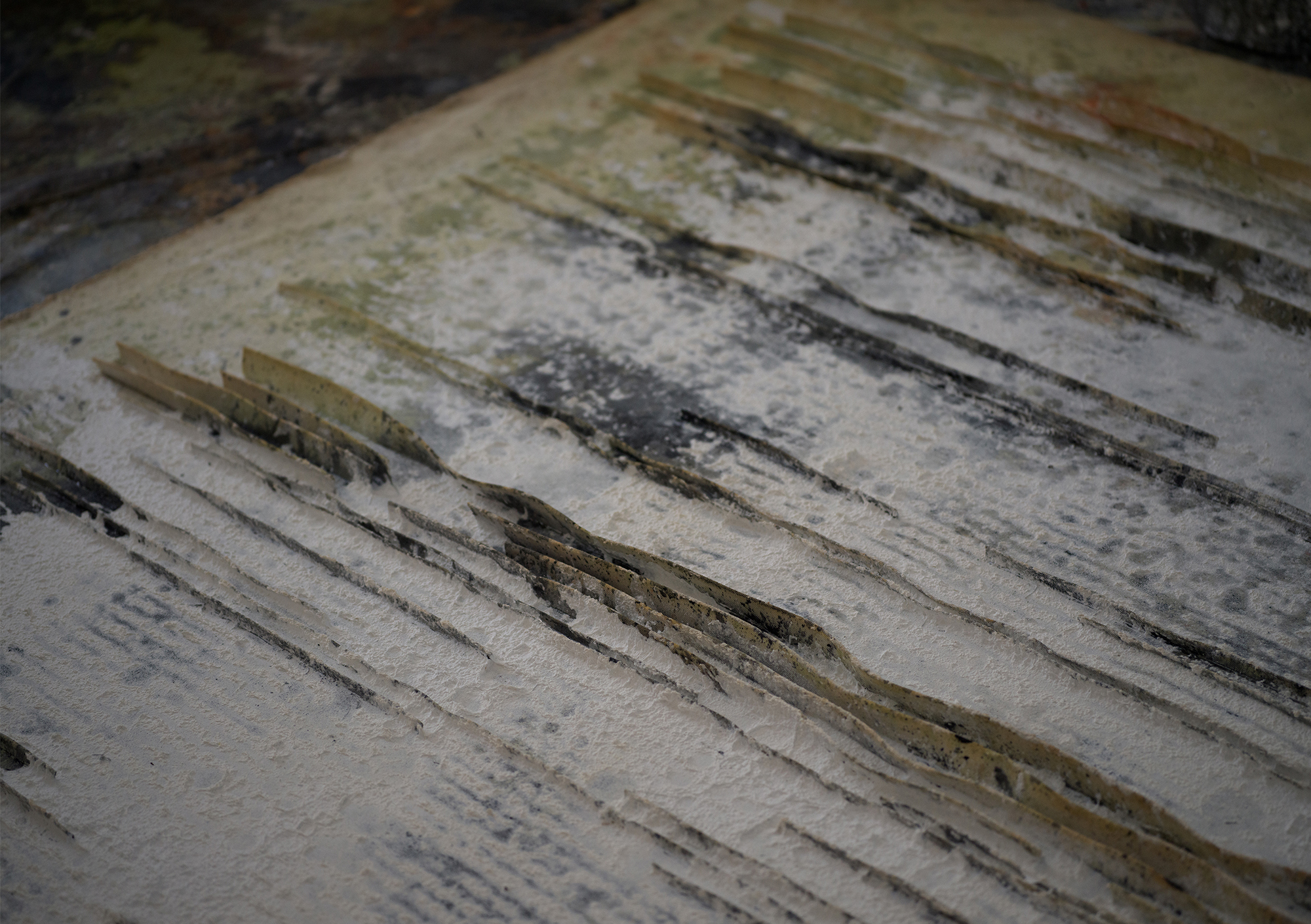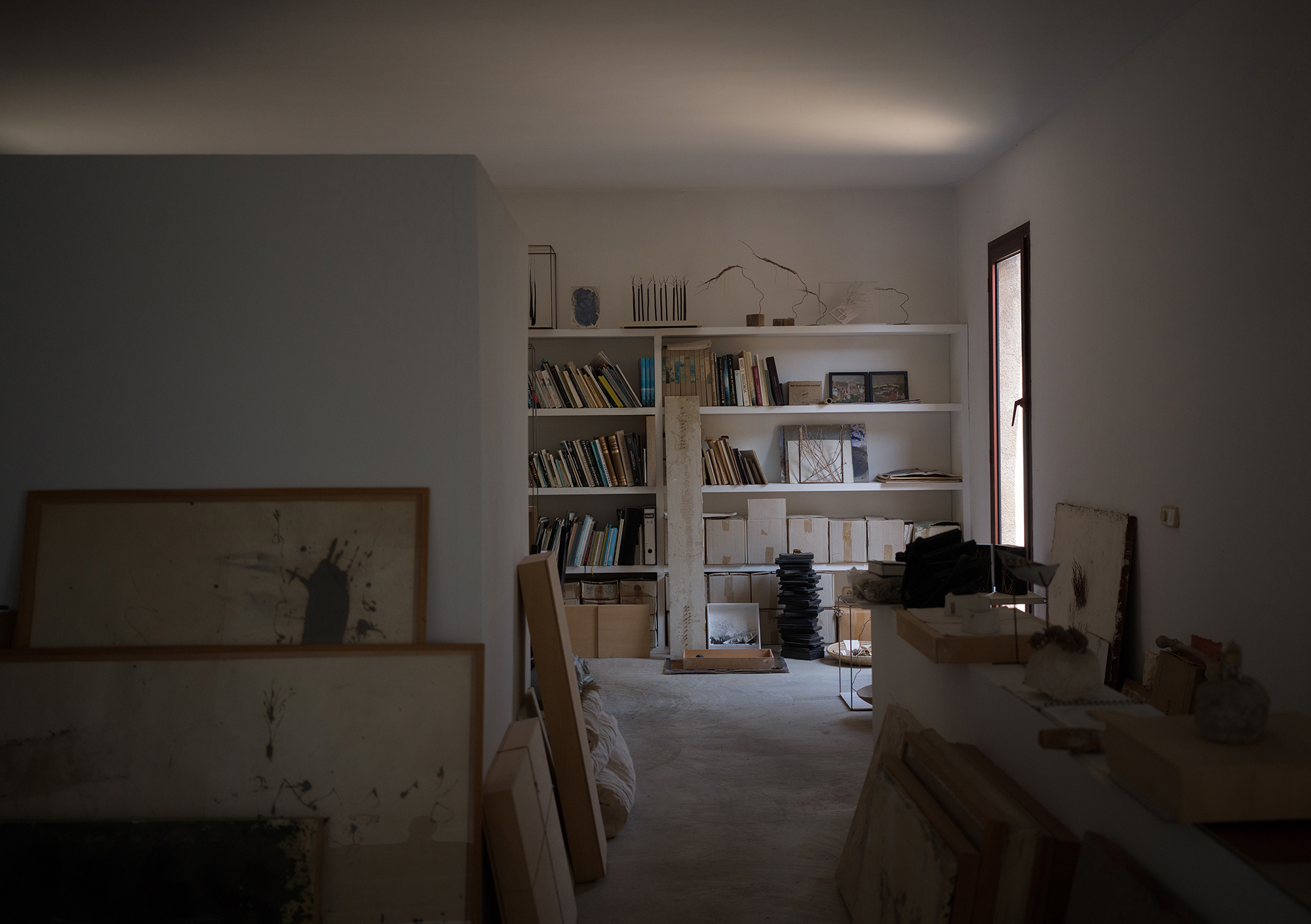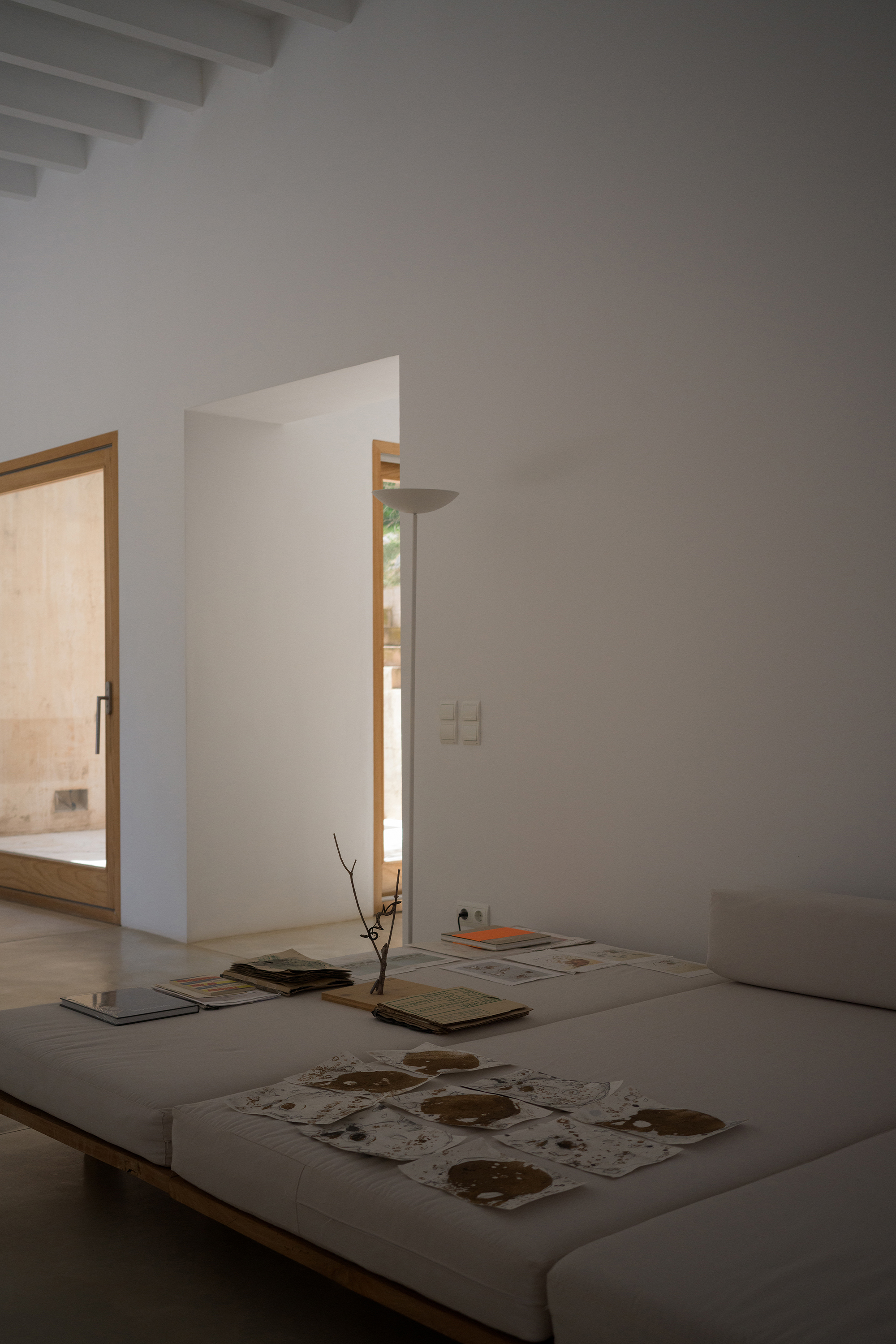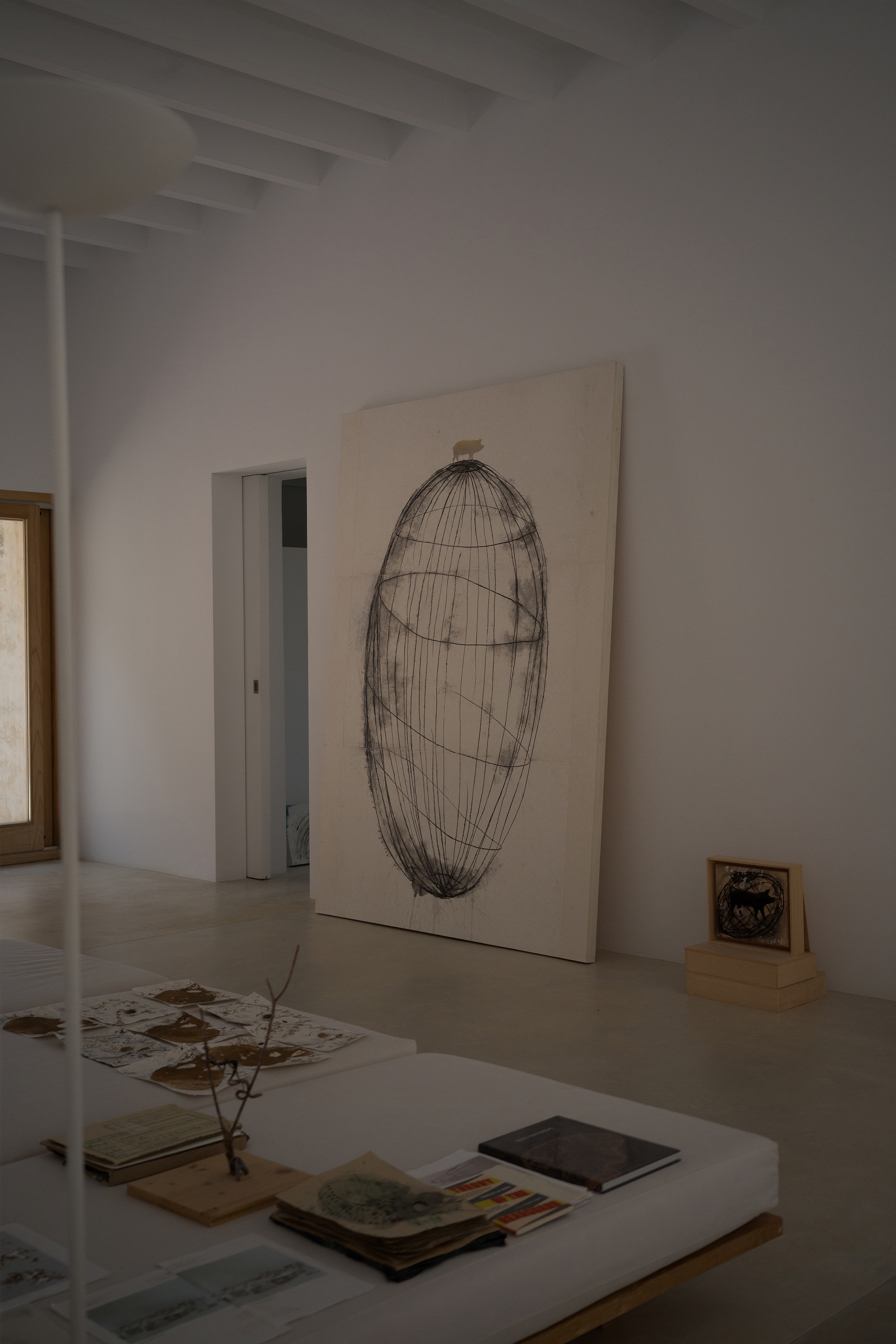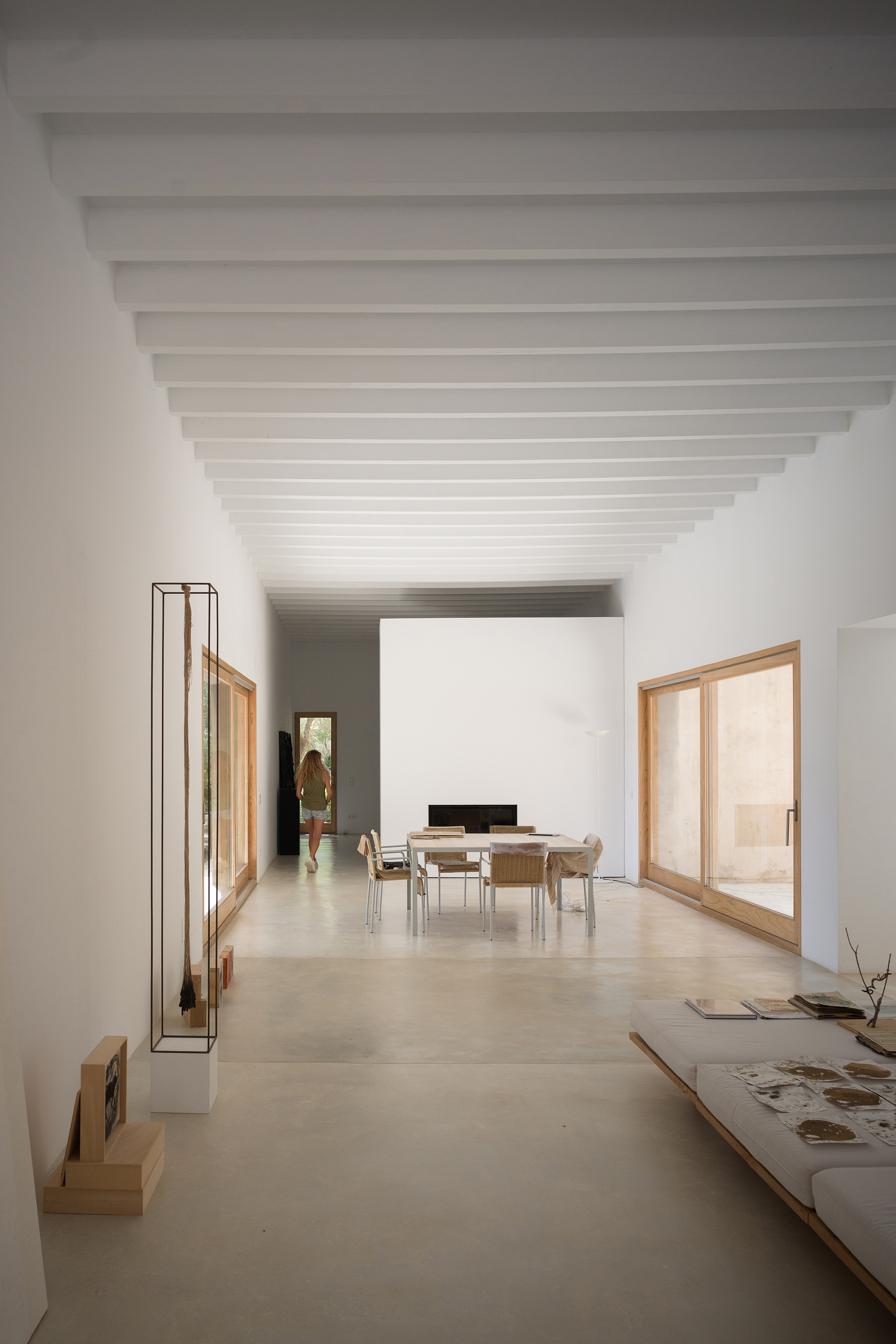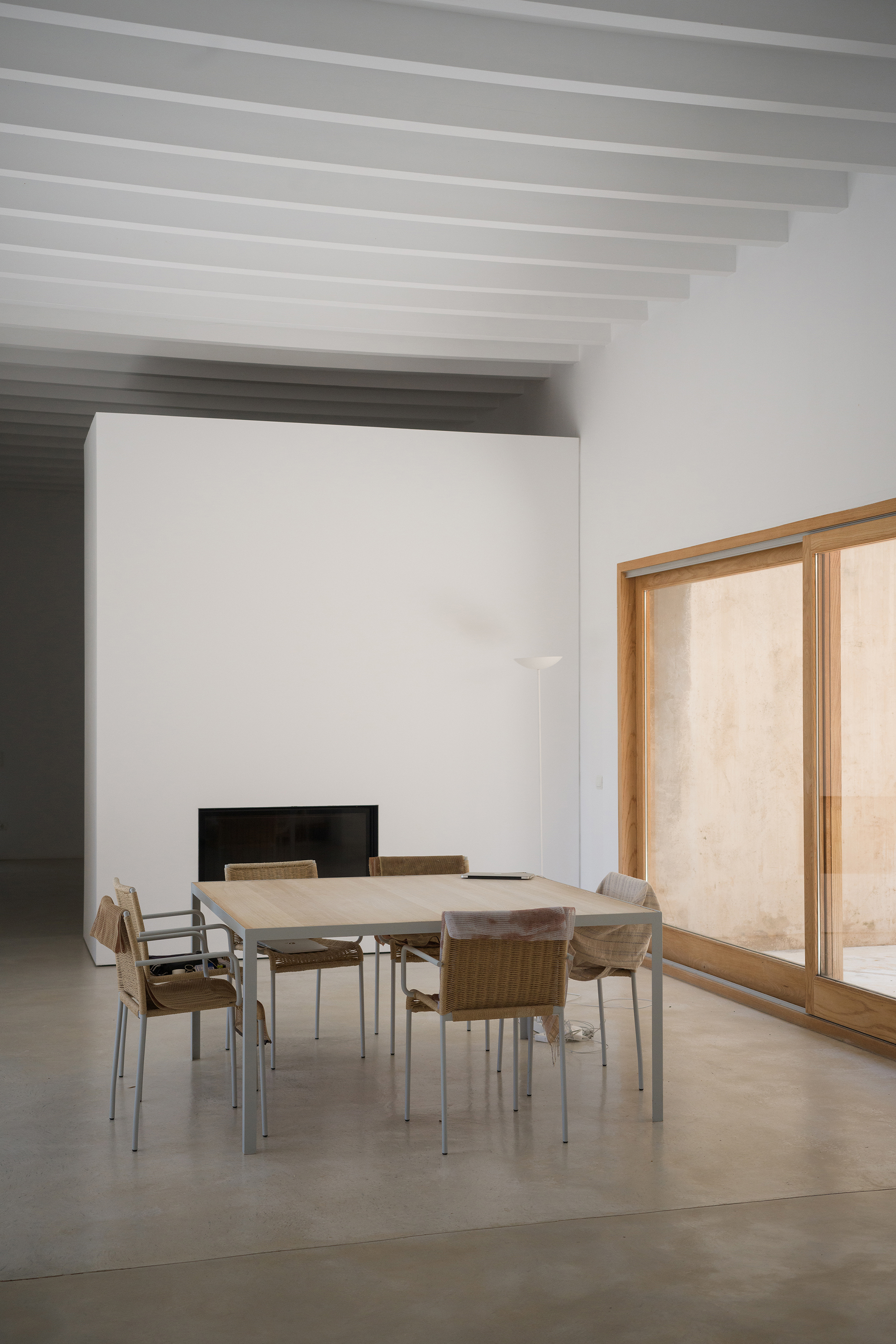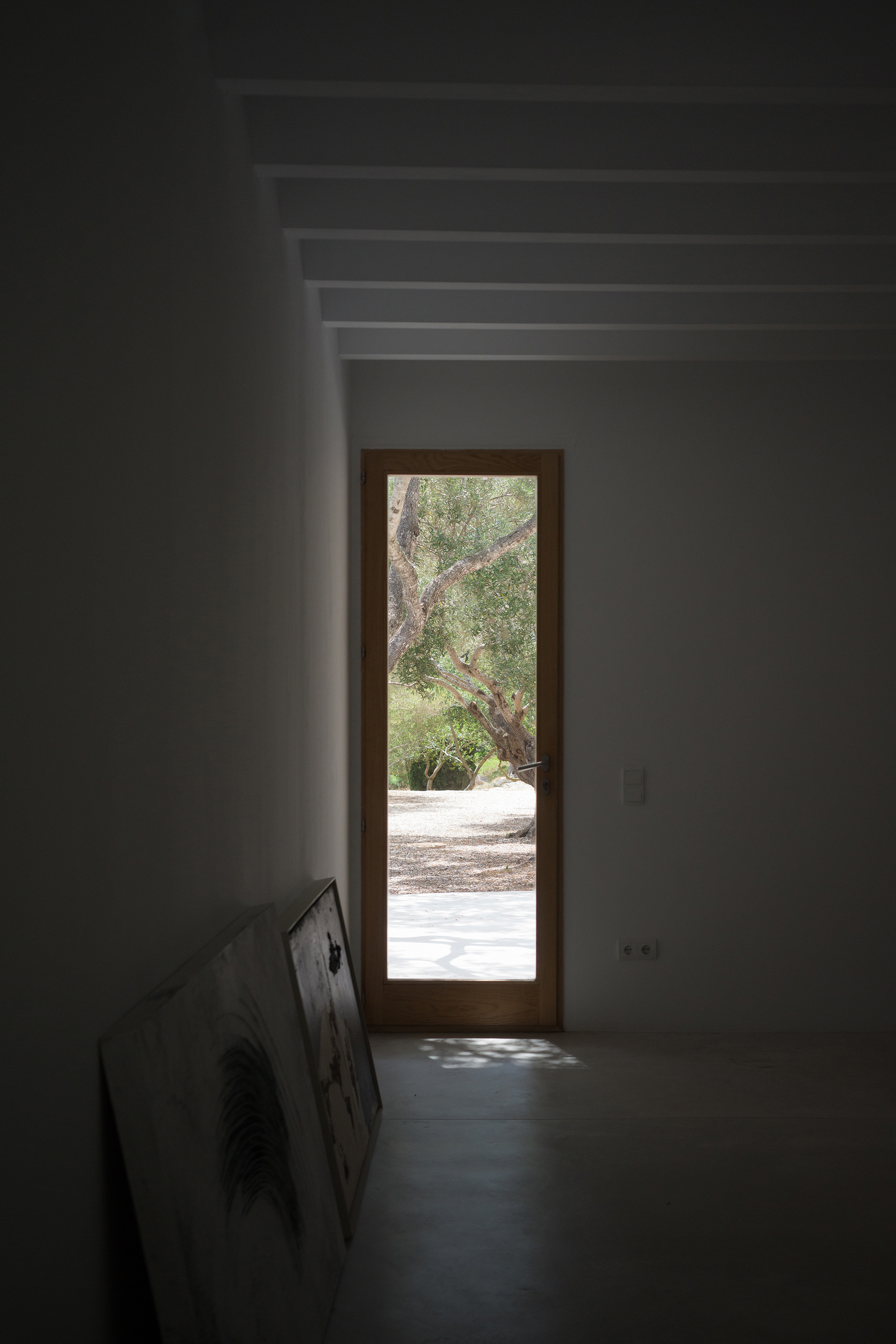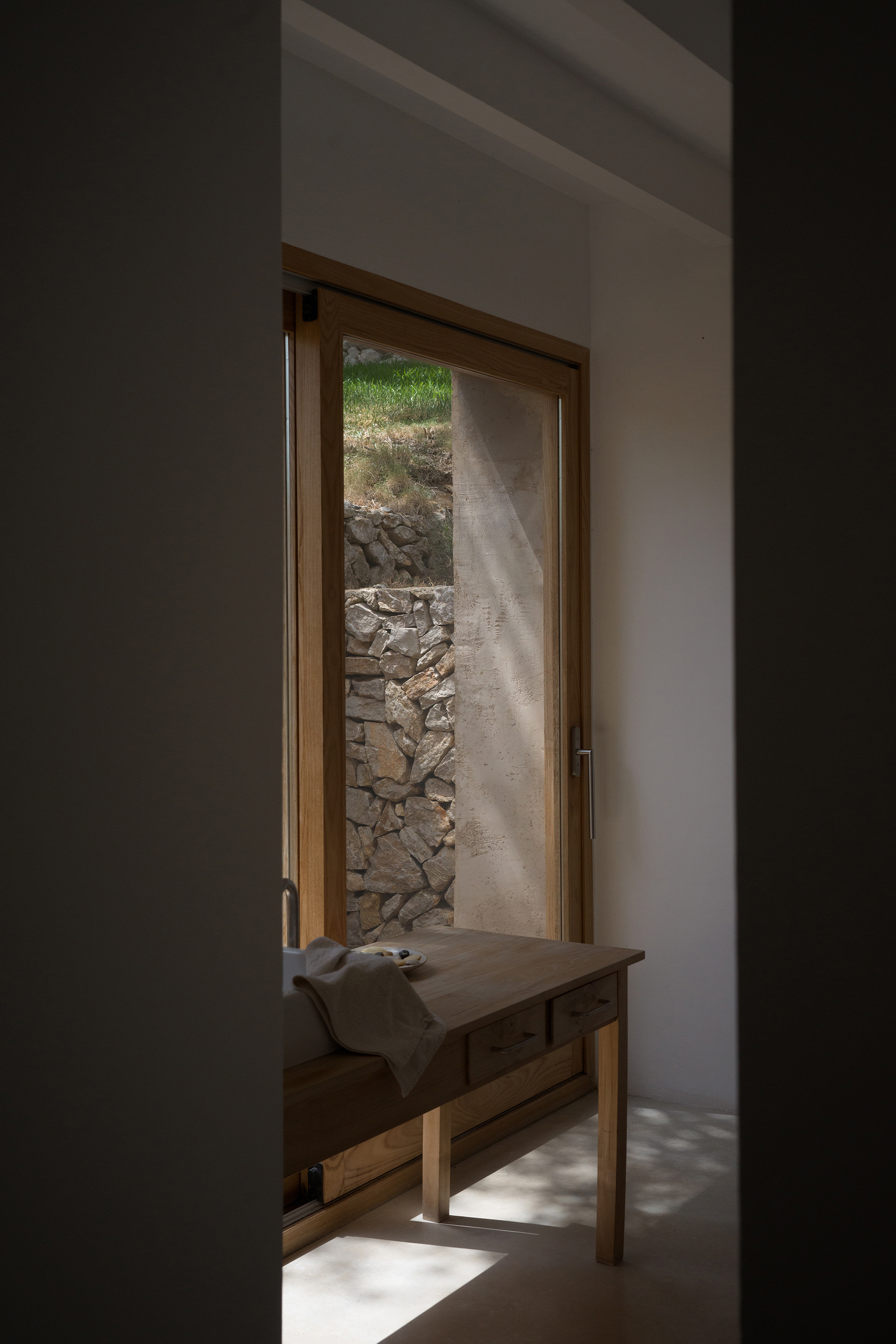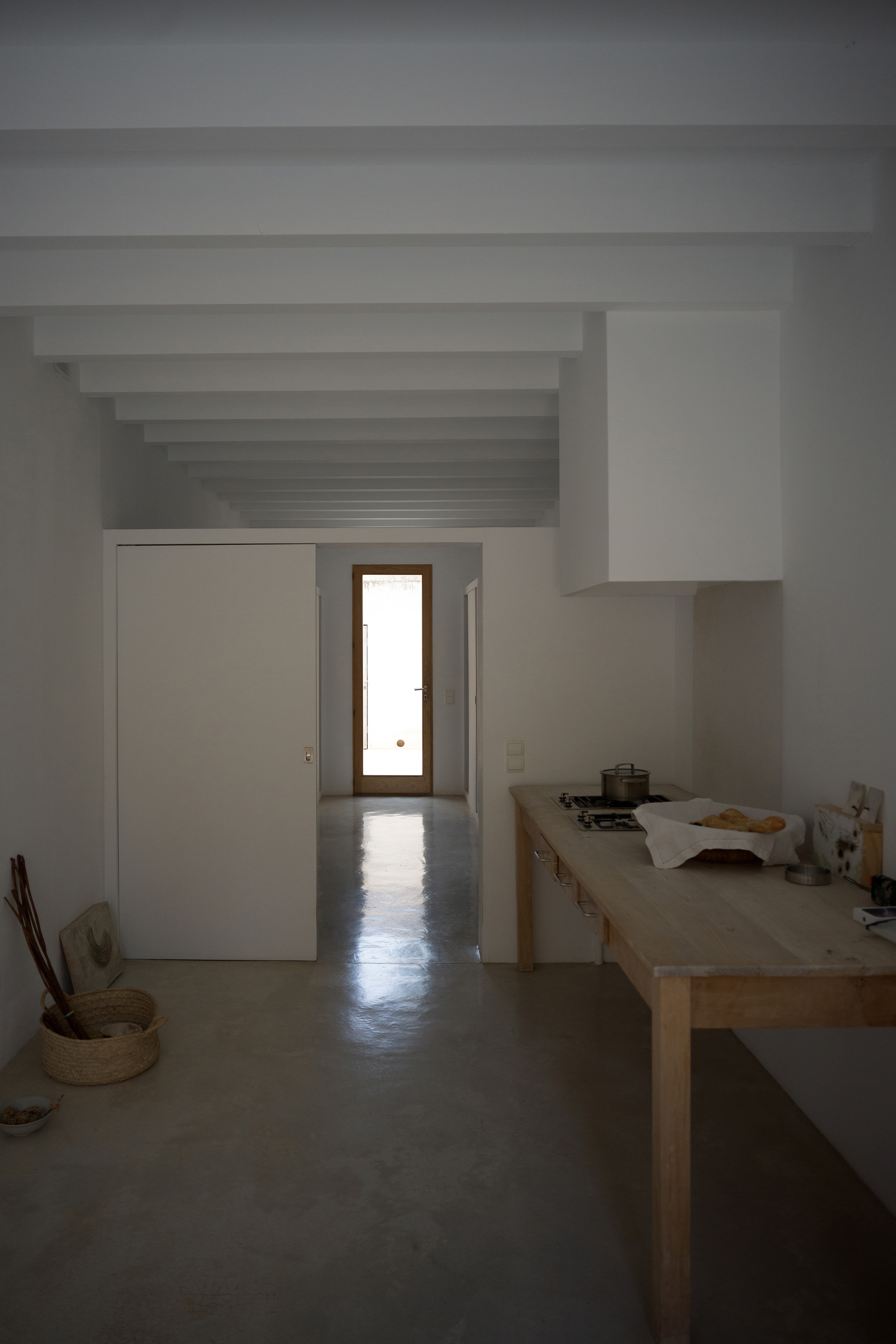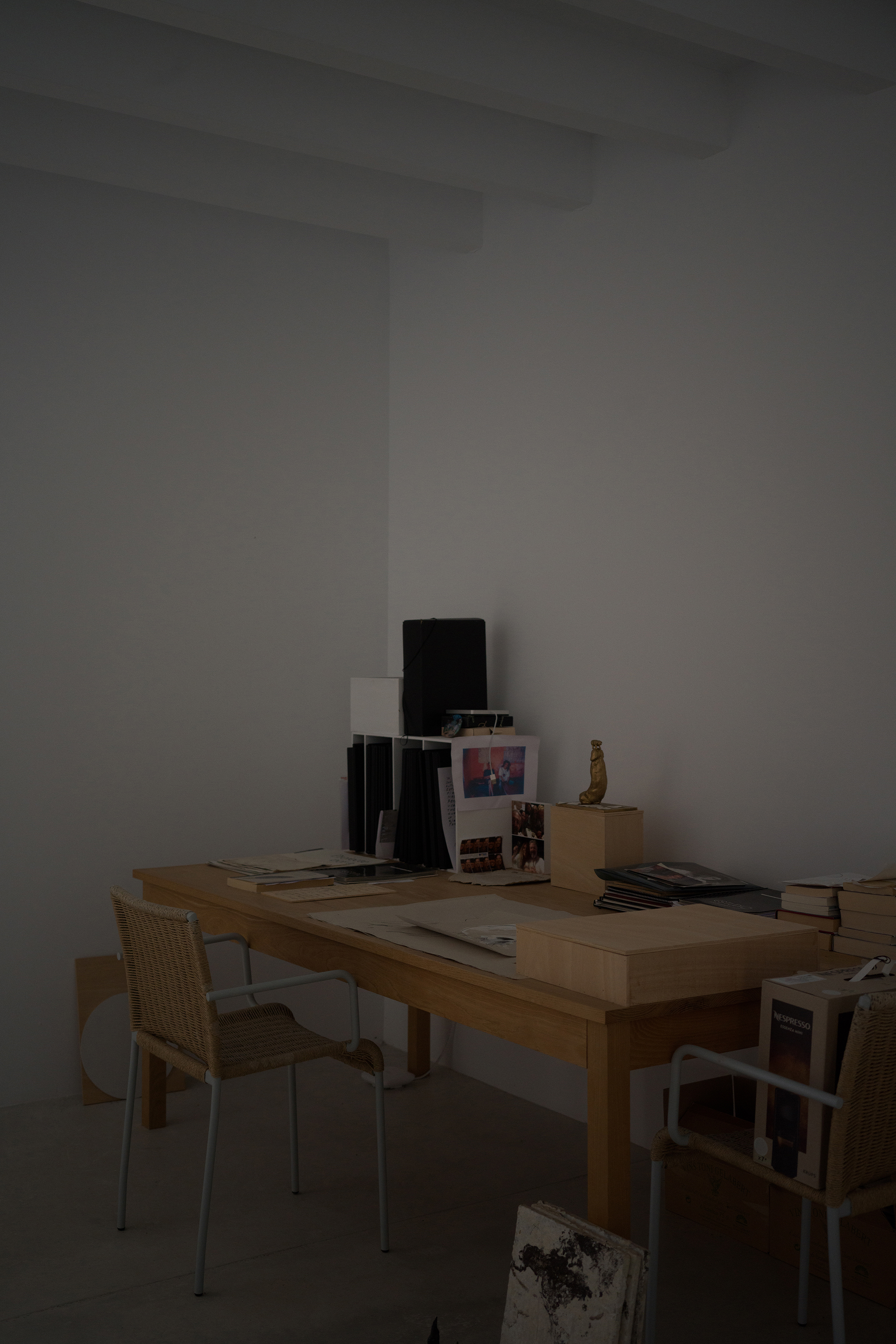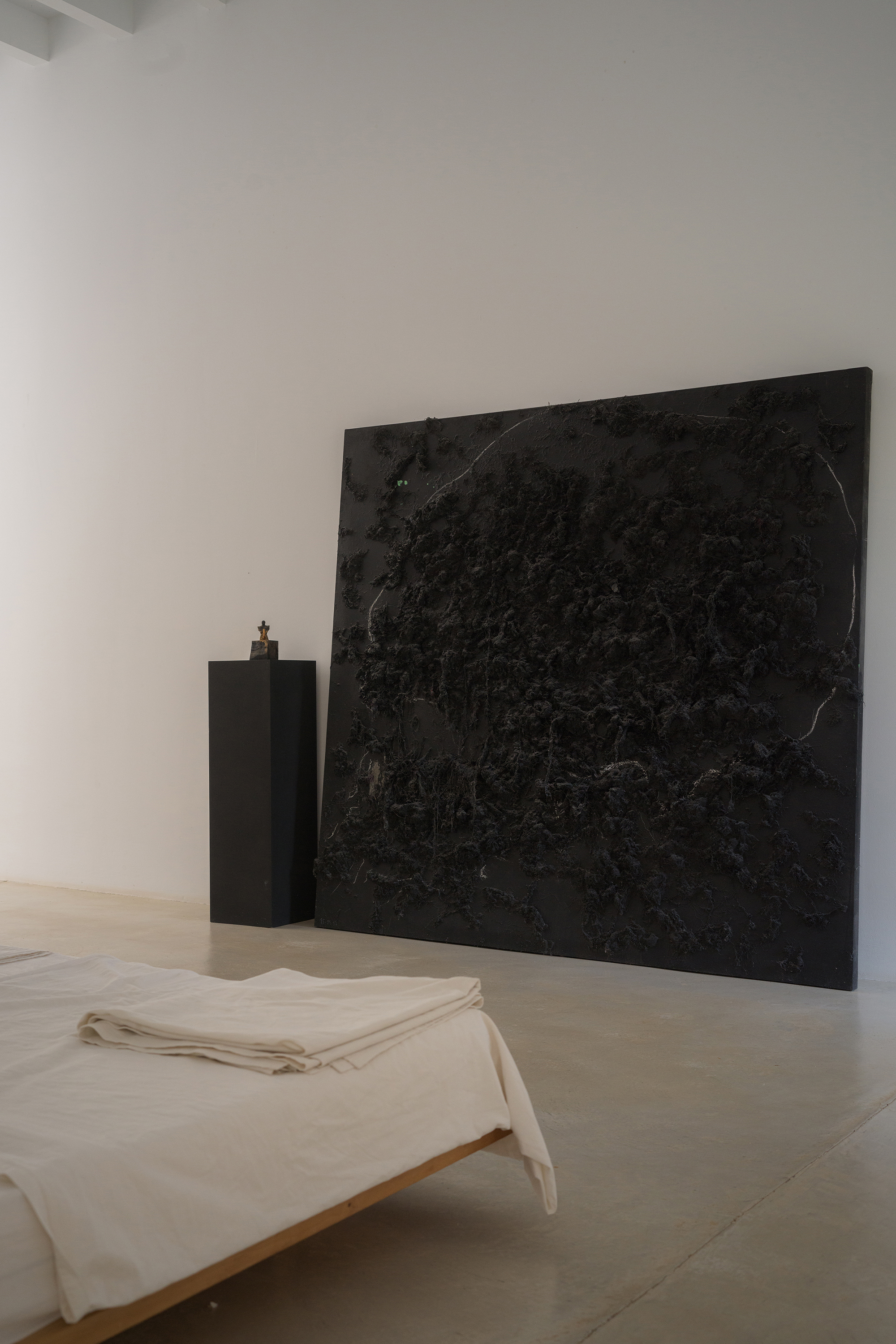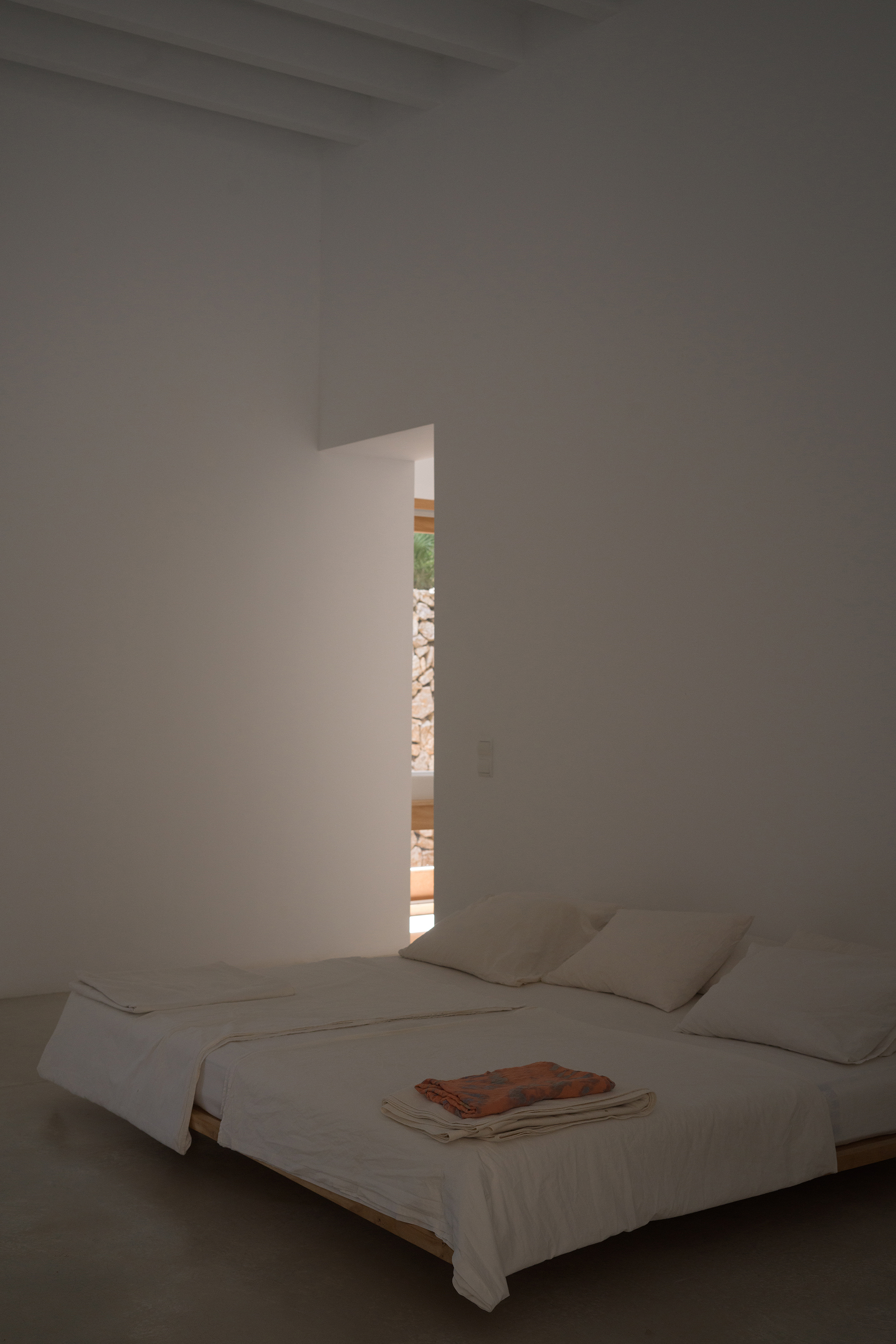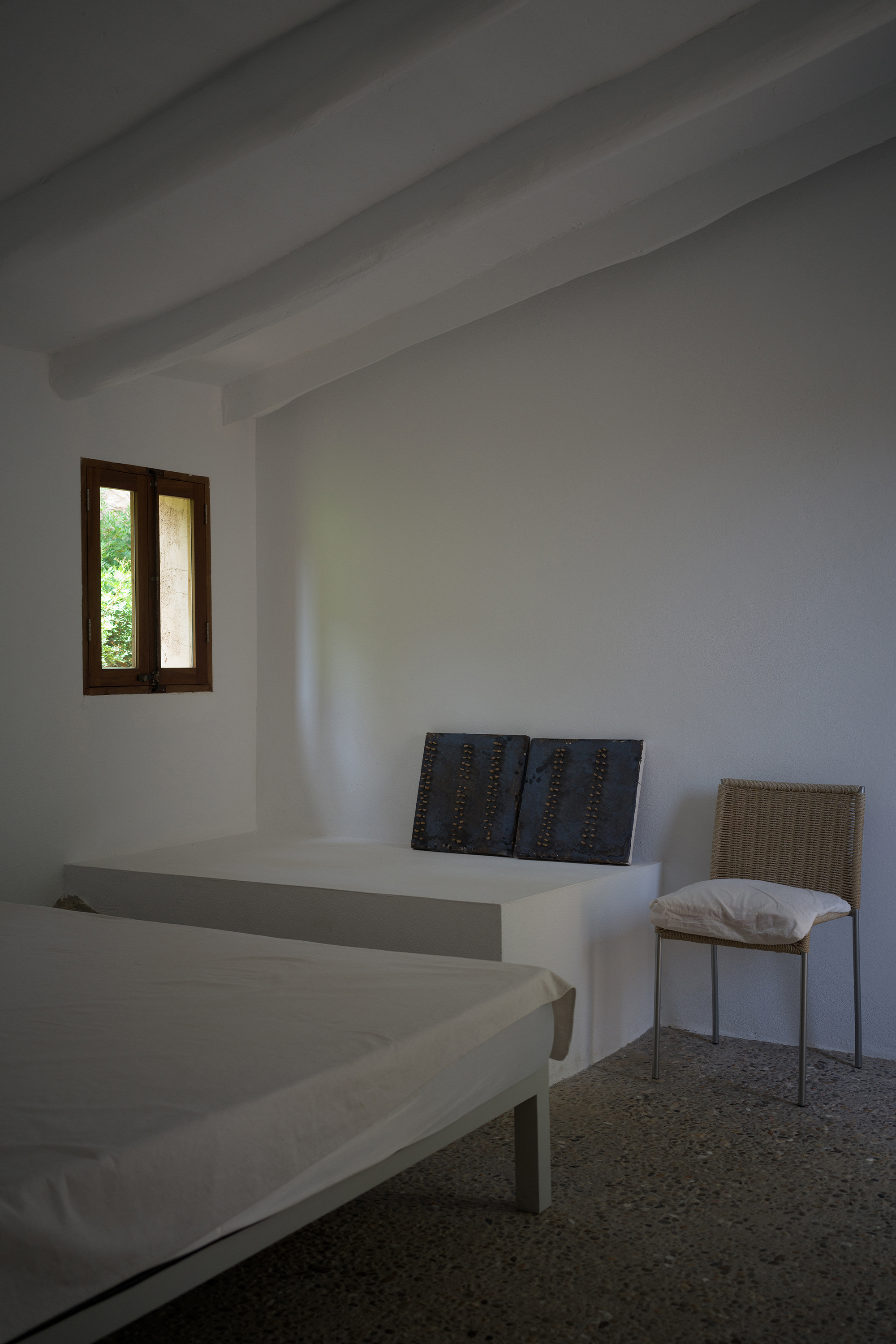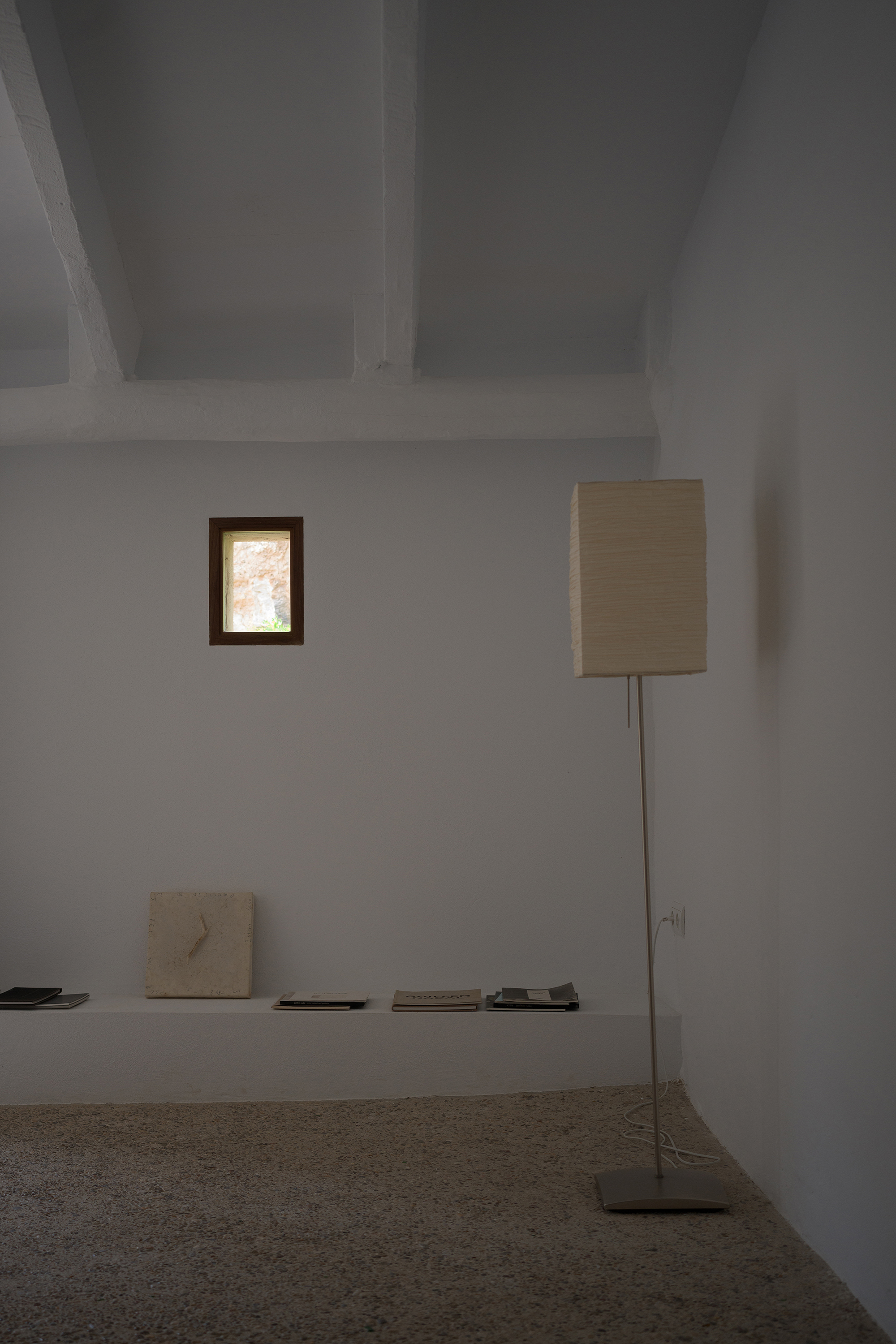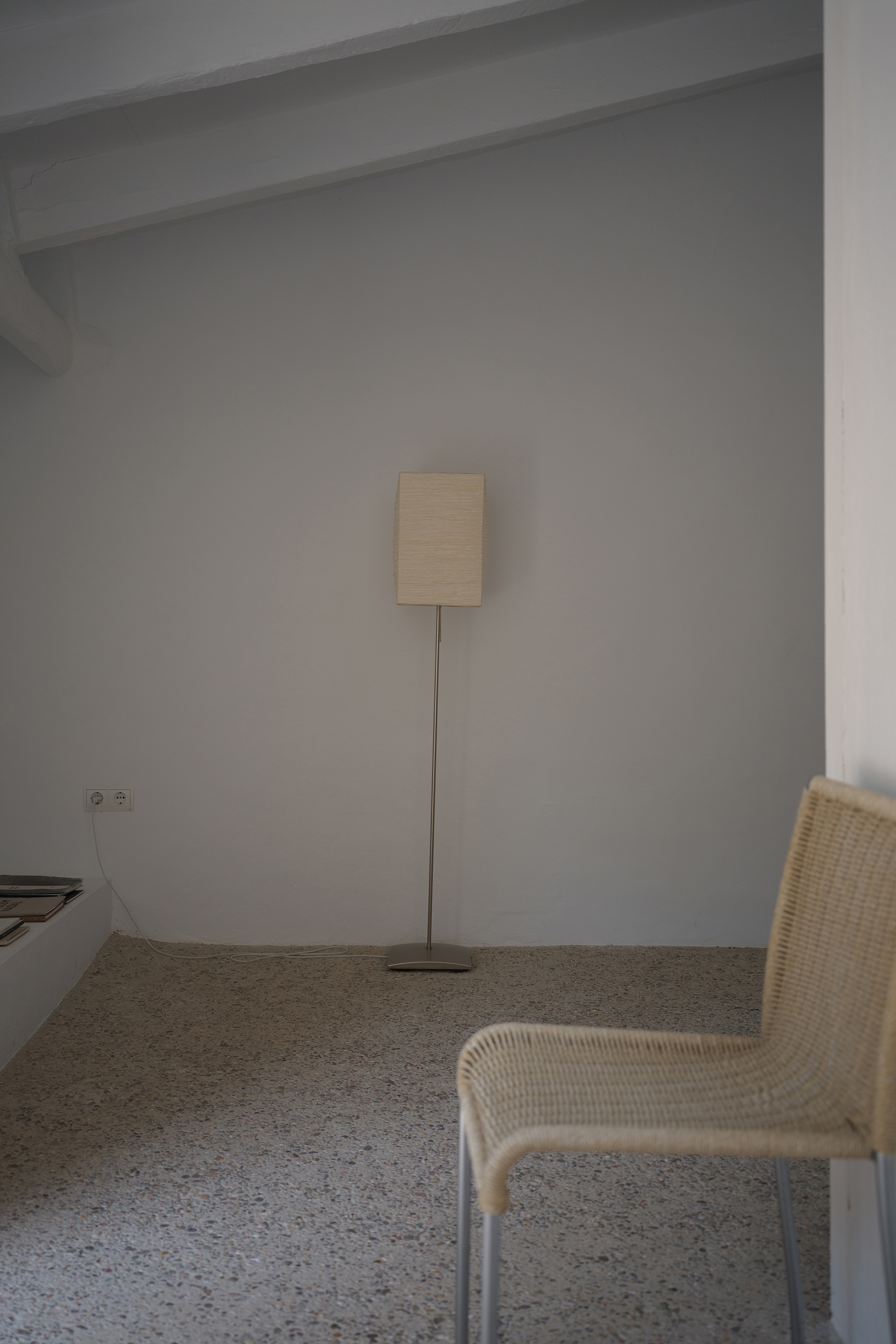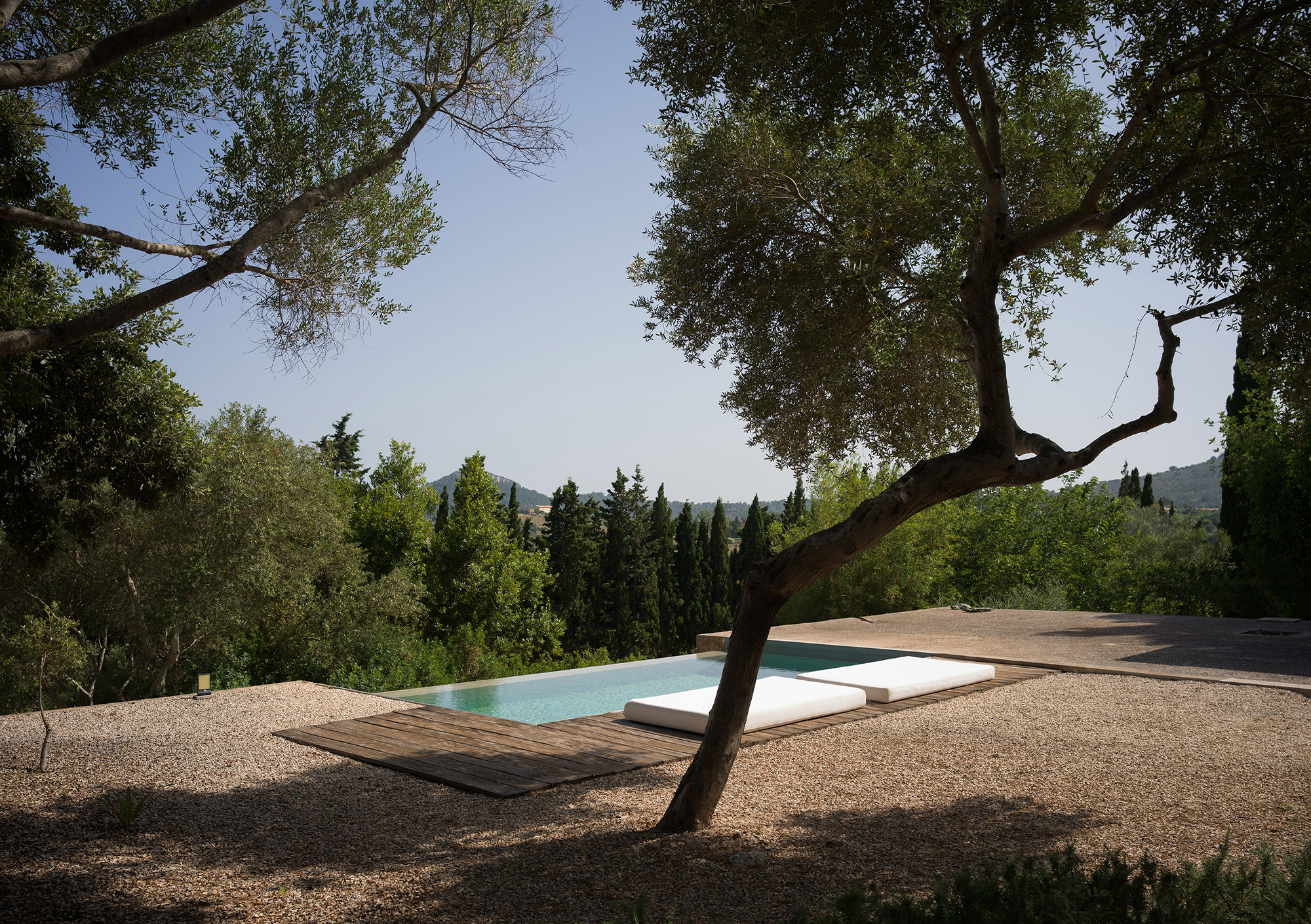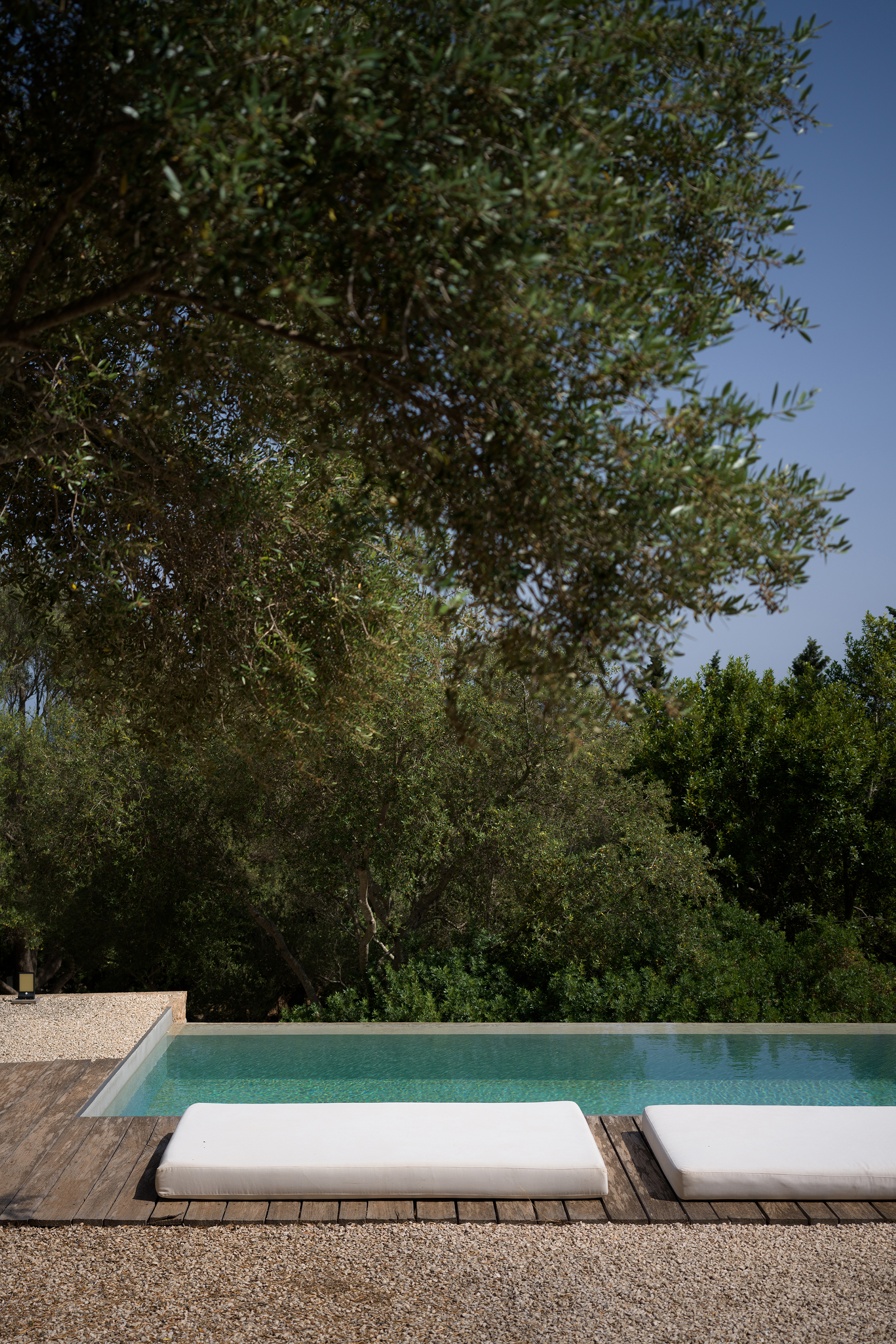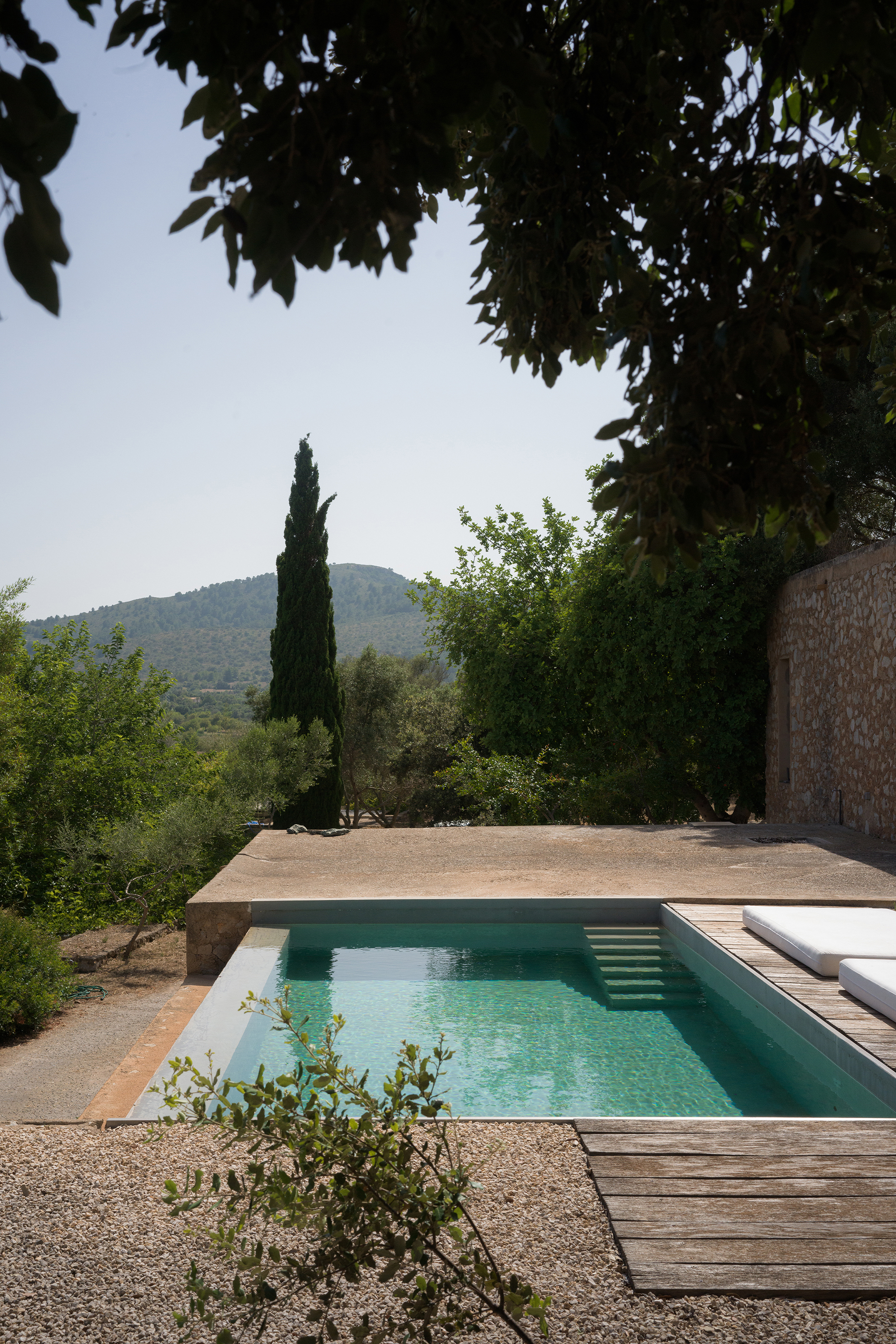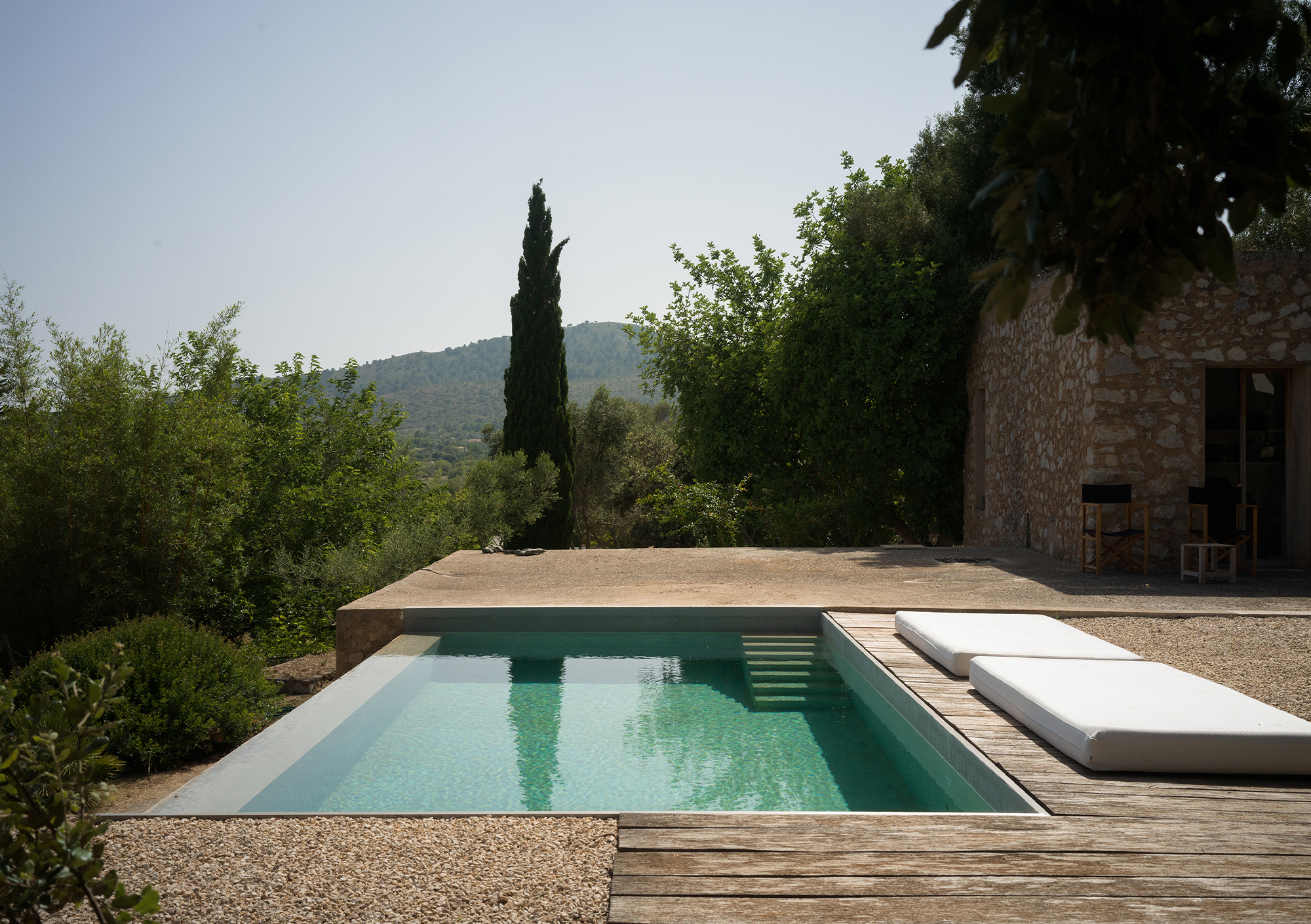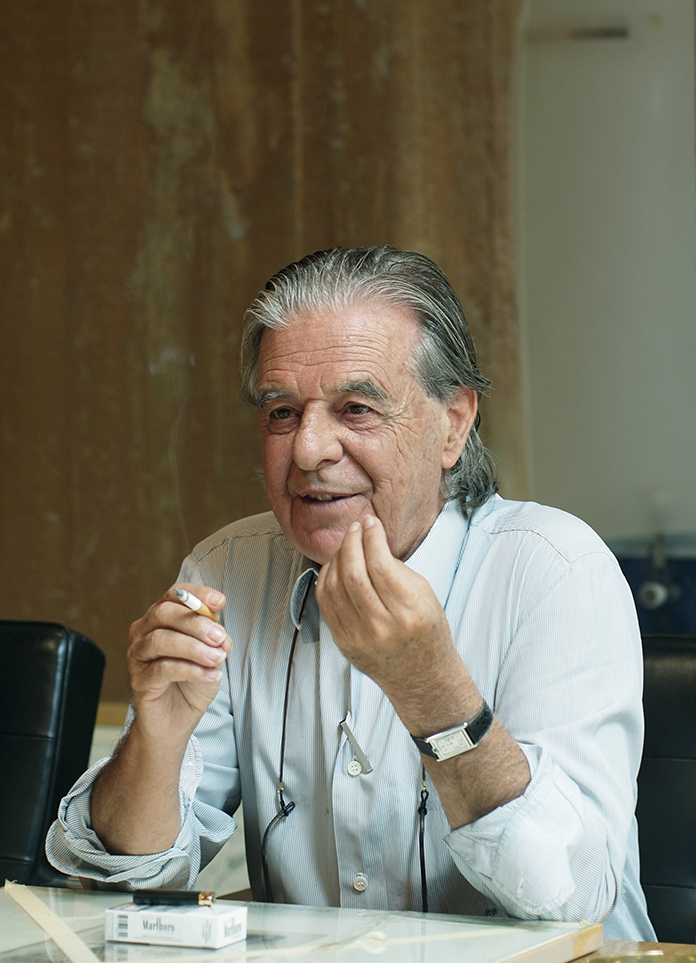Mallorca in June does not meet you with spectacle, but with a kind of quiet insistence. Light clings to stone, the air carries salt, and the horizon folds into itself like a long-held breath. In the midst of this island, we entered Guillem’s home and studio. It feels like a cavern of light, hollowed and refined through decades of living. There are no ceiling lamps, no staged décor—only furniture shaped by hand, walls that absorb and return the sun, corners where the simplest gestures carry intention. Here, living and creating are inseparable. The space is alive, and it breathes with the work.
Guillem Nadal (born 1957) is regarded as one of Spain’s most significant contemporary artists, living and working on the island of Mallorca. Deeply rooted in his homeland, his practice draws on nature’s vitality while reflecting the island’s contradictory character and shifting landscapes. Moving fluidly between sculpture, site-specific installations, and painting, he has developed a distinctive abstract language: works that evoke caves, islands, or waves, while holding a tension between calligraphic gesture and tactile surface. Light and shadow, fullness and emptiness, impulse and silence—all converge within his art. His works are held in major museums and collections worldwide, yet their foundation remains inseparable from the soil and nature of Mallorca.
Guillem speaks of his art as landscapes. Yet they are not the landscapes of Mallorca’s hills or sea. They are landscapes of another order: visual and tactile, yes, but also memorial, emotional, imaginary. Relief lines rise like ridges in a topographic map; pigments settle as if pressed by geological time. To grasp them, one must look not only outward but inward. Each painting is less an image to be decoded than a terrain to be inhabited, a mirror that reflects the viewer’s own inner landscape. A thousand eyes will see a thousand different horizons.






